Gift Ideas for Kids Who Love Good Omens
If you’ve got a kid who finds the humor in this hilarious apocalyptic tale, these gifts may be just the ticket.
The funniest apocalyptic novel of the 20th century pulled in plenty of new fans with its much-anticipated screen adaptation. These gifts have the same apocalyptic appeal.
Something You Need
The full-cast radio production will have you laughing out loud.
SOMETHING YOU WANT
IdealBookshelf Neil Gaiman Print
This gorgeous illustration features Gaiman’s best- loved work, including Neverwhere, Stardust, American Gods, and The Sandman as well as Good Omens.
Pratchett invented this surprisingly fun strategy game for the eponymous book in the Discworld series, and it’s as weird, complicated, and satisfying as the rest of Pratchett’s work. (And bonus: Pratchett wrote the user manual, which is brilliant.)
Neil Gaiman has penned some of the best-loved episodes of the Doctor Who reboot, but even if he hadn’t, it’s easy to imagine the newest reboot of The Doctor jumping into the action with Crowley and Aziraphale.
SOMETHING TO WEAR
You don’t have to understand it, you just have to wear it.
SOMETHING TO READ
You Don't Have to Be Evil to Work Here, But It Helps by Tom Holt
The Eyre Affair by Jasper Fforde
The Dark Lord of Derkholm by Diana Wynne Jones
Bridge of Birds: A Novel of an Ancient China that Never Was by Barry Hughart
The Gates by John Connolly
(We’re Amazon affiliates, so if you purchase something through an Amazon link, we may receive a small percentage of the sale. Obviously this doesn’t influence what we recommend, and we link to places other than Amazon.)
10 Family Habits that Foster Lifelong Readers
A love of reading comes naturally for some kids and not-so-naturally for others, but you can do a lot to make your home a space where reading is an important part of everyday life.
A love of reading comes naturally for some kids and not-so-naturally for others, but you can do a lot to make your home a space where reading is an important part of everyday life.
1. Curate Book Baskets and Shelves
Especially for younger kids and reluctant readers, walking into a library or confronting a full bookshelf can be intimidating. A sparse bedroom shelf lined with books whose covers face out can help a child locate a book for independent reading time that matches up with that week’s interests. Curated book baskets are wonderful for giving kids choices within limits that help reading seem friendlier.
A few book basket ideas:
Teething-friendly books for the youngest readers
A selection of readers — any of which would work for your emergent or beginner reader’s current level
Books about trucks, puppies, bugs, or ponies — whatever your child’s current interest
A selection of books that fit bathroom reading criteria — books divided up into short selections that are funny or interesting (like comics)
A basket of WWII historical fiction choices to complement WWII history study
2. Never Leave without a Book
Richard Larson, a professor who studies queueing theory at MIT, says that the average person spends a cumulative 1 to 2 years of life waiting in lines. Startling statistics aside, I think we can all agree that we spend lots of time waiting — waiting at the dentist, waiting for takeout food, waiting in the car for a train to pass. Sure, that time could be spent playing Candy Crush or scrolling through Facebook (or picking a fight with your sibling), but wouldn’t it be better spent reading? Make it a rule that everybody leaves the house with something to read.
3. Celebrate with a Bookstore Visit
You may think I’m a monster, but I told my kids at the outset that there is no Tooth Fairy. Of course, they still want to cash in on their discarded teeth, though, so I like to offer them a trip to the used bookstore instead of money. While we’re there, I’ll offer to pay for a few 75 cent readers of their choosing. There are a million little things in life that we celebrate as families. It’s wonderful to attach some of those small celebrations to books.
4. Institute the Weekly Library Visit
Make Library Day a thing that happens every week on the same day. Not only will regularity make it a valuable part of the routine, but it will also help you stay out of trouble with overdue fines.
5. Subscribe to Magazines
We adults get inundated with mail, but getting mail is so special to kids. Tap into that feeling of specialness and create positive connotations with reading by getting a magazine subscription for each child.
6. Make Readaloud Time Part of the Routine
Readaloud time is one those things that’s easy to let slip past, so we need to build it into our daily routines. At our house, we have two read-aloud times. We start the school day with historical fiction related to our unit of study and read fiction that’s more focused on entertainment value at bedtime.
7. Make Independent Reading Time Part of the Routine
We all want our kids to spend time reading, but sometimes we forget to make time for it to happen. Just like read-aloud time, we have to make independent reading time a family norm that has its own space set aside in the day.
8. Listen to Audiobooks in the Car
I will admit that I resisted audiobooks for a long time. I didn’t have the right technology in my car, the library didn’t have the best selection, blah, blah, blah. I actually decided to suck it up and give audiobooks a try in the name of taming backseat squabbles. It worked to a degree I didn’t even imagine possible. Oh, and now we’re all digesting about two more quality books per month than we used to. Seriously, try audiobooks even if only for the peaceful car rides.
9. Read and Talk about Reading
This is directed toward the adults. If you want your kids to believe that reading is important and worthwhile, you have to model it. Make sure that kids have opportunities to see respected adults of both genders reading and valuing reading.
10. Geek Out as a Family about a Story
Later this summer, we’re (finally) visiting The Wizarding World of Harry Potter. Obviously, the day at the theme park will be magical in all senses of the word, but leading up to it, we are having so much fun immersing ourselves in the story together by reading the beautiful illustrated editions of the books, coloring Harry Potter coloring books, crafting wands out of mismatched chopsticks, watching the movies, and assembling Harry Potter jigsaw puzzles. Geeking out over a story as a family goes beyond just telling your kids that reading is important. It shows them that the world of the imagination is important, that reading is cool, that they can get lost in stories even when they grow up, too.
You Shouldn’t Compare Your Homeschool to Anyone Else’s
Homeschooling isn’t a competition — so why do we feel so compelled to compare our kids to other homeschoolers and traditionally schooled kids? (Hint: It’s probably more about us than about them.)
Remember that old adage, comparison is the thief of joy? We’ve all heard it. Heck, we may have even used that line on our own children at time or two.
Yet, have you ever thought to yourself in regards to homeschooling: Am I doing enough? Are my kids going to be okay? Have you ever heard an offhand comment by a schooled friend, or even another homeschooler, and thought to yourself: Oh my goodness, my child hasn’t learned that! I am not doing enough! I’m betting you have had those thoughts; I’ve been around the block enough to know that most homeschoolers feel like that at one time or another.
The why is obvious when we stop and think about it: we are so in the thick of it. We are so daily confronted, obviously and nakedly, by a struggling reader or a child who has yet to grasp simple algebra. And when the fear and self-doubt start to seep in, it’s easy to ask ourselves, and really mean it: Can I fix this? Am I up to this task?
And then, accompanying those nagging fears, are those Neighbor McPerfect types. Their children all play soccer, receive perfect grades, and every one of those little buggars takes part in academic summer enrichment activities; and no one at their house seems much worried about hitting certain benchmarks by a certain time because they all surpassed the benchmarks earlier than anyone else in their class. Their children are all college bound, not because it’s where they necessarily belong, but because it is the next rung on the ladder of how to do life. There is a neat, tidy bow wrapped so perfectly around their lives that it almost makes you want to weep with feelings of inadequacy.
Yes, ’tis true, comparison is the thief of joy.
Take a breath and pause for a minute. Why do you homeschool? Take some time— a lot of it if it’s needed— and remind yourself what you’re about.
Of course our homeschooled kids aren’t exact replicas of their schooled peers. Call me crazy, but isn’t that pretty much exactly why we do this? In all honestly, if we cared about following the traditional formula of doing life right, our kids wouldn’t have come home from a traditional school in the first place. No, they’d be in school. Where, I might add, our struggling reader would still be struggling to read, but instead of receiving one-on-one, positive attention in a place where it’s safe to fail, she would likely struggle to hide her perceived inadequacies from her peers.
That kid that just isn’t getting algebra? They’d not be understanding it in school either, and unlike at school, at home you have the option to change the approach you’re using, or buy a different curriculum. You can even shut the algebra book for a bit knowing that when you come back to it, your child’s brain will likely be ready to make sense of what was confusing before.
So why do we compare ourselves (or, let’s be honest, our kids) to our (their) peers? Why do we let ourselves feel so very badly that the very outcomes we wanted (independent thinkers! individualized learning!) are the outcomes we get?
The reality is we all maybe kind of want to parent that child that wins the national spelling bee. That child so very obviously excels at something, and it is so easy to defend homeschooling and demonstrate its efficacy. But the child who struggles to read in third grade? Has homeschooling failed her? On our worst days we maybe kind of believe that it might have.
What if, though, instead of examining the minutia of our homeschooling successes and failures, we instead examined what we are all climbing toward? Schools don’t have a monopoly on getting it right. So what if your local public school requires memorization of multiplication factors in third grade? If your gaze is focused on your academic end goals, you might more clearly see that a love of math is more important long term to the child you see mathematical promise in than getting those times tables memorized at the assigned time. A focus that has its sites set on the academic finish line might more clearly see the value in a child forgetting to do her geometry lesson because she was so wrapped up with her charcoal pencils and her sketchbook. Why is it worse to learn basic geography solely through computer games while never picking up a geography text? Is the knowledge less real because it wasn’t absorbed through textbook and lecture?
It’s not that the way schools do things is necessarily wrong. For many kids those ways work well, and we, like so many of you, do use a lot of traditional things in our homeschool. But my point is this: please don’t allow yourself to get bogged down in the mire. Every parent experiences self-doubt when it comes to their kids, even the ones who are doing it the traditional way. Second-guessing ourselves just means we care about the outcome; it doesn’t validate our doubts.
If you simply must compare a child to someone, compare him against himself. Can he do more today than he could yesterday? Is she an inquisitive soul who last year knew more than you ever imagined a person could know about every dog breed on the planet, and yet continues to learn more in her free time? Can your struggling reader read more today than yesterday? When comparing by those metrics, which are the only ones that matter, there is no joy stealing from the comparison. In fact, I would wager that by those measurements, your child looks pretty darn good, just as they ought.
Comparison can be the thief of joy. . . but only if you let it. I hope you won’t.
How to Get Excited about Homeschooling Again
When your homeschool starts to feel like more work than fun, it’s time to make a change.
When your homeschool starts to feel like more work than fun, it’s time to make a change.
When your homeschool mojo goes missing, the day-to-day work of homeschooling becomes a slog. And this doesn’t just happen to folks who use workbooks — homeschool slump can strike any kind of homeschooler. Sometimes, all you need to get that mojo back is a break — hello, summer! — but if you’re lounging by the pool in late July still feeling blah about next year’s homeschool, these strategies might be just what you need to get excited about homeschooling again.
Do more of what you like and less of what you don’t.
What if you only did the parts of your job you actually liked? This is the questions Marla Koutoujian, a career coach in New York City, who helps professions who feel stuck in a career rut, asks all her new clients, and she says homeschool moms should ask themselves the same thing.
Koutoujian says homeschoolers and corporate bosses often run into the same problem: The better you get at your job, the less you get to do the parts that you actually like. For business folks, this can be a harder problem to navigate, but homeschoolers have the freedom to recreate their homeschool from the ground up every day. Start by thinking about the things you really like — go back in time, too, and think about the moments in your homeschool that brought you the most joy. Those are the things that should be at the top of your to-do list every single day and the things that you should give the most time and energy to because those are the things that give back to you.
This summer is the perfect time to do just that: Make your list, and figure out how to get more of what you love about homeschooling into every single day. Maybe this means you’ll sign up for more classes or that you’ll stop taking so many outside classes. Maybe it means you’ll toss the workbooks or that you’ll buy more workbooks, that you’ll get back to reading aloud every day or that you’ll play outside more. The key is to identify what brings you joy and to build your homeschool days around that joy list instead of a less-than-thrilling to-do list.
Find your social support network.
“I could not homeschool if I didn’t have people to talk to about homeschooling,” says Debra,* a homeschool mom in Ontario. Debra relies on weekly park days with friends and an active online discussion group to keep her homeschool motivation going strong.
A strong support network can be the difference between a ho-hum homeschool and one that’s bursting with energy. “I am much more excited about homeschooling when I hear about other people’s great homeschool ideas and successes,” Debra says. “And talking about challenges sometimes reminds me of solutions I’ve found and forgotten about.”
If you’re not lucky enough to have a strong local homeschool community, keep looking: Homeschool networks tend to be small, grassroots organization that aren’t always easy to find and tap into. The more homeschool events and activities you visit, the more likely you are to find a group that’s the right fit for your family. And if you can’t find a local group, look online: There are tons of homeschool forums and support groups that exist in the virtual world. If your homeschool friends are far-flung, you might also consider starting an online or email group, where you can share your homeschool stories. If you do, Debra recommends establishing the same three rules that she says work well for her group: Limit griping, focus on problems as something to be solved, and share personal experiences (“This worked for me”) rather than giving direct advice (“You should do this.”).
Revamp your space.
Sitting in the same chair and staring at the same walls for years can gradually erode your enthusiasm for anything you do in that space, says interior designer Laila Carsters, who specializes in office design. Start in the room where you spend most of your hands-on homeschooling time — maybe it’s a school room, but it might be your kitchen, living room, or even your back porch. Refresh the walls with a new paint color, hang a few new or moved-from- other-rooms pictures, rearrange the furniture, switch the blinds for sheer curtains to let in more light, introduce a few plants — you don’t have to spend a lot of money or be professionally trained to give your work space a facelift, says Carsters. If even a small redo isn’t an option right now, relocate. If you usually homeschool in the school room, start doing your readalouds in the living room or in the backyard.
Homeschool Makeover: How Can I Make Our Homeschool Less School-y?
Jenn’s been struggling to find a balance between the structure and academics she needs and the fun, laidback vibe she wants her homeschool to have.
Jenn’s been struggling to find a balance between the structure and academics she needs and the fun, laidback vibe she wants her homeschool to have. We help her make some adjustments to make her homeschool more relaxed.
“I love the idea of unschooling, but I’m never going to be an unschooler,” says Jennifer Harris. Jenn homeschools her 9-year-old son Ian in a style that she calls Charlotte Mason-ish—“but lately, it’s feeling like all workbooks and dictation and sitting-at-the-desk time, which is too far in the other direction,” Jenn says.
We asked Jenn to track her time over a couple of weeks so that we could get a clearer idea of what a typical day in her homeschool looked like. Jenn was surprised to discover that she and Ian usually spent about two hours a day on school time—“it feels like so much more,” Jenn says. On most days, they’d start school after breakfast, then sit down together at the table to work. Sometimes Ian would read independently, sometimes Jenn would read aloud, but they’d stay at the table, working their way through one subject at a time, until it was time to start lunch. Jenn’s husband, Frank, comes home for lunch every day, so she and Ian hurry to get the table cleaned up and lunch prepared so that they can all enjoy the meal together.
“It’s gotten to the point where school feels like work to both of us,” says Jenn. “I care about staying on top of things academically, but I hate the way our learning process is starting to feel like a job. Is there a way to bring back fun without sacrificing academics?”
The PLAN
Since it was pretty clear that Jenn wasn’t overdoing it time-wise — two to three hours is a reasonable amount of hands-on school time for a third-grader — we decided to focus on the way she was using her time. By spending all their school time at the table and keeping an eye on the clock ticking toward a lunchtime deadline, Jenn and Ian weren’t able to relax into their routine. Here’s how we changed things up:
Moving classes to the afternoon. When I asked Jenn why they were doing all their school work before lunch, she paused and said, “You know what? I don’t even know.” It turns out that afternoons are quiet at the Harris house. Except for a regular Friday park day, Jenn and Ian are hanging out at home in the afternoons. We suggested moving their second hour of school time to the afternoon to make the morning more relaxed. Instead of jumping into their next lesson after handwriting, Ian starts his independent reading and Jenn gets household stuff out of the way until it’s time to prep lunch.
Starting the day with a meeting at the table. Jenn felt like table time was essential to starting their homeschool day. “I need the structure of sitting down in a consistent spot every day and saying okay, now we’re homeschooling,” Jenn says. We suggested that Jenn keep doing this — but instead of spending an entire morning at the table, she and Ian could get the same down-to-business boost from a morning meeting there right after breakfast. While they’re at the table, Ian does his daily copy work and handwriting practice.
Relocate for different subjects. The kitchen table is the best place for Ian to practice handwriting, but his other subjects might benefit from a change of scene. We suggested that Jenn and Ian switch locations each time they move to a new subject: math on the patio, history on the couch, spelling at the desk in Ian’s room, etc. This kind of musical chairs isn’t just a way to transition between subjects—researchers have discovered that students who work on material in different places retain it better than those who sit in the same spot to study every day.
Integrate more reading aloud. Ian’s a strong reader, and Jenn’s been encouraging him to do more independent reading, but since readalouds are one of the things Jenn and Ian like best about homeschooling, we suggested that they bring back the readaloud. (Kids benefit from being read to long after they’re able to finish chapter books on their own, and reading together means you get to learn together—which is one of the best ways to feel like your homeschool is a fun, relaxed place.) We suggested that Jenn and Ian go back to doing book-based subjects, including history and science, as readalouds and letting Ian keep his reading skills sharp with independent reading.
The results
“I didn’t realize such simple changes could make such a big difference, but they really have,” Jenn says when we follow up with her. She and Ian have been implementing their new routine over the past month, and Jenn says everything is working better than she had hoped.
“I think I bought into the idea that when we hit third grade, school should become more school-like,” Jenn says. “And the result was that Ian was learning about the same amount but we were having a lot less fun. I think I needed someone to say ‘Hey, you can teach your kid what he needs to know and still have fun doing it.’”
This column is excerpted from the summer 2016 issue of HSL. Do you need a homeschool makeover? Email us at hello@homeschoollifemag.com with a description of what’s tripping up your homeschool life, and we may feature your makeover in an upcoming issue.
Homeschool Unit Study: King John of England
Why is it so easy to hate England's notorious King John? Oh, let us count the ways in this trash-talking unit study.
Why is it so easy to hate England's notorious King John? Oh, let us count the ways in this trash-talking unit study.
“Foul as it is, hell itself is made fouler by the presence of King John,” wrote Matthew Paris just a few short years after England’s much-despised ruler died of dysentery. There’s no question that the son of Henry II and Eleanor of Aquitaine was universally despised by his subjects, so it’s kind of ironic that John’s legacy includes—however reluctantly—the foundation for modern-day democracy. Mark the anniversary of King John’s death this fall by learning more about the worst king of England.
He was notoriously treacherous, lecherous, and cruel, but we owe our democratic government in part to King John, whose sheer terribleness inspired British nobles to curtail the rights of the monarchy and invest the nobility with rights of their own. When John signed the Magna Carta—after arranging this nephew’s murder, scheming against his Crusading brother, and generally being the worst ruler in Christendom—he forever changed the relationship between ruler and subjects.
READ THIS
Ivanhoe
Sir Walter Scott’s historical romance paints Prince John (acting king for Richard III, who’s off fighting in the Crusades) as scheming, tyrannical monarch, which is pretty much how his contemporaries and modern historians have viewed him.
(Middle grades)
The Merry Adventures of Robin Hood
Scott’s influence is apparent in Howard Pyle’s collection of Robin Hood stories, which cast tax-happy John as the tale’s central villain.
(Middle grades)
King John: Treachery and Tyranny in Medieval England: The Road to Magna Carta
John’s life of “intrigues, quarrels, battles, sieges, negotiations, truces, and betrayals” is illuminated through contemporary chronicles and his own letters in Marc Morris’ scholarly, readable tome.
(High school)
WATCH THIS
The Lion in Winter (1968)
Set in 1183, during Henry II’s reign, this film adaptation of the play by James Goldman focuses on the contentious relationship between John’s parents and certainly doesn’t cast a positive light on the effete, unpleasant prince—even if you might feel a little sorry for him when you imagine his childhood.
Robin Hood (1973)
Disney’s animated animal take on the Robin Hood legend includes a thumb-sucking, greedy Prince Johns whose comeuppance at the film’s conclusion feels well-deserved.
This was originally published in the Fall 2016 issue of HSL. Photo: Wikimedia Commons.
We the People: A Community Model for Exploring the U.S. Constitution
“A Community Conversation to Understand the U.S. Constitution” was a profound and powerful experience for Carrie’s homeschool.
“A Community Conversation to Understand the U.S. Constitution” was a profound and powerful experience for Carrie’s homeschool.
One of the more rewarding learning experiences I’ve had with my 14-year-old son this year has been participating in We the People MN, a series of community teach-ins about the Constitution held at Solomon’s Porch, a Minneapolis gathering space housed in a former church. Run completely by volunteers, We the People MN bills itself as “A Community Conversation to Understand the U.S. Constitution.” I wanted to share a little about our family’s experience with the series in the hope of inspiring other programs like it across the country.
The idea for the series came from Cara Letofsky, a South Minneapolis resident who posted on her neighborhood Facebook group that the 2016 election made her want to learn more about the Constitution. About 60 people responded that they shared that desire to come together as a community to educate themselves politically. A small group of about ten volunteers followed up to plan the series, deciding what amendments they especially wanted to learn about and collaborating to identify community experts who might be willing to tackle leading a discussion of particular amendments. Working their community connections, they lined up a group of highly qualified presenters willing to volunteer their time, including a law professor from a local university, a Minneapolis city council member, attorneys, law students, and organizers from groups that are deeply involved in such contentious Constitutional issues as gun control laws, the right to vote, and reproductive rights.
The organizing committee decided on a format of 10 two-hour presentations, spaced out every two weeks from mid-January 2017 to late April 2017. The first program was a kick-off potluck (because everything always goes better with good food) and a public reading of the entire Constitution, with participants taking turns reading sections aloud at the mic. The organizers also distributed free pocket copies of the Constitution, donated by one of the organizers, Constitutional law professor Matt Filner. Finding free or cheap pocket Constitutions isn’t difficult, luckily. The National Center for Constitutional Studies, for instance, offers a bulk purchase of 100 pocket Constitutions for $40 on their website.
Cara Letofksy, the woman who’d sparked the idea, expected perhaps 20 people to show up to the first presentation. To her surprise, over 80 people attended that first event, and attendance has usually averaged between 100 to 150 participants at subsequent events.
In their initial planning discussions, the organizers knew they couldn’t cover the entire Constitution, so they decided to focus on Constitutional rights that might be most directly challenged under a Trump administration. Other communities might want to choose a different focus, such as looking at ways the Constitution directly impacts local issues and controversies.
The We the People MN series has covered such issues as the branches of government and separation of powers, as well as the First Amendment’s guarantees of freedom of expression and assembly and the Second Amendment’s guarantee of the right to bear arms (as well as the limitations implied by the wording of the amendment). One program was devoted to the right to privacy (and the limits on our privacy). Another event focused on the Fifth, Sixth, and Thirteenth Amendments and their relevance to criminal justice today. The series’ last presentation on the amendments will look at the right to vote guaranteed by the Fifteenth, Nineteenth, and Twenty-Fourth Amendments—and how that right to vote is being steadily eroded today. The series’ last gathering, planned for the 100th day of the Trump administration, will feature a community potluck and “next steps” discussion.
Each event has included a “TED”-style talk by an expert to set the stage for further discussion, followed by time for participants to talk in small groups and share their thoughts and bring up questions for the expert presenter. Almost every presentation has also included brief talks by local activists working in some way on problems raised by ongoing Constitutional debates. Often, these activists have given participants in the programs concrete ideas about how to get involved. For instance, at the event devoted to Second Amendment issues, a presenter from the group Protect Minnesota passed out factsheets about upcoming gun legislation and tips for creating effective talking points. The group highlighted that the most effective advocates usually find a way articulate their personal connections to proposed legislation.
Each presenter also typically sends out readings ahead of time through the We the People MN Facebook page for participants who want to take a deeper dive into topics, though the readings aren’t required to understand the presentations. The readings have ranged from excerpts from the Federalist Papers to summaries of key Supreme Court cases to up-to-the-minute news articles about contemporary Constitutional controversies.
For my son and me, attending these events has been a bonding, highly relevant way to study civics together. Throughout our week, we often find ourselves still talking about what we learned at the most recent We the People presentation. The series has given us new tools for understanding how the Constitution relates to our everyday lives and the lives of those around us.
I’ve also found the series personally helpful as I’ve stepped up my own game as a citizen this year. I’m calling my legislators and attending more public hearings, meetings, and protests than ever (and when I can, hauling my son along with me). Studying the Constitution in this way has given my son and me a clearer sense of what people fighting for change are up against and how we as citizens can make the best use of our time and people power.
Above all, I love that my son has seen people of all ages and backgrounds getting together every other Sunday afternoon to educate ourselves about our Constitution. To me, that’s been such a powerful example of lifelong learning and civic engagement, one I hope will stick with him the rest of his life. I think another crucial piece of the whole experience has been learning from people who are actively involved in the conversation about how to define our Constitutional rights and who are fighting to preserve those rights.
The volunteers who set up We the People MN are hoping to export the model elsewhere. They have plans to create a curriculum to help other people set up their own series, ones that will be relevant to their local communities. If you’d like to learn more, see videos of the presentations, and keep apprised of curriculum developments, you can visit the group’s public Facebook page.
How Do You Cope When Life Interrupts Your Homeschool?
When the going gets tough, how do you juggle life and homeschooling?
Sometimes life gets in the way of homeschooling — and that’s the way it has to be because homeschooling is part of your life.
This year has been crazy — my mother-in-law was diagnosed with cancer, we had to move unexpectedly, and my husband broke his ankle playing soccer with the kids. To say that homeschooling has gotten short shrift would be a major understatement, and things don’t look to be settling back to normal any time soon. How do you handle homeschooling when life keeps getting in the way?
I’m so sorry you’ve got so much on your plate right now. Maybe it helps a little to know that even though you might sometimes feel like the world’s worst homeschooling parent, everything is going to be okay. Sometimes life gets in the way of homeschooling — and that’s the way it has to be because homeschooling is part of your life.
You don’t say how old your kids are, but if they haven’t started high school yet, give yourself permission to unschool for a while. Instead of trying to make new schedules and hunt for easier-to-use curriculum materials, just stock up on open-ended activities, like math games, puzzle books, art supplies, readalouds, building materials, etc. Have what we call “do something” time each day — kids can choose from a variety of activities you’ve decided on together, and that counts as your school time. They may reread the Harry Potter series, draw a series of still life pictures, or watch math videos on Khan Academy. During this time, be as present as you can be. When you have a lot to deal with, it’s easy to fall into the trap of checking your phone or your email all the time, but try to set aside short blocks of time where you’re just focused on being with your kids. For your own sanity, don’t try to make this active teaching time — just be with them, whether you’re reading together or playing Uno.
If your student is in high school and missing time could affect his transcript, talk about it. He may be fine with adding some lesson time to his summers or waiting an extra year to graduate — neither of which is a big deal. If he’s worried about falling behind, consider signing him up for a semester of online classes. It may not be the first choice for either of you, but if he wants to stay on schedule, it’s a straightforward way to do it.
Check in with yourself regularly to make sure that homeschooling still makes sense for your family. Sending the kids back to school — for a while or for good — isn’t a homeschool failure; sometimes it’s the thing that makes the most sense for your family’s life. It sounds like a lot of your life disruptions will settle down with time, but if you can’t foresee a time or event that would stabilize your everyday life, you might want to consider your options beyond hands-on homeschooling.
Above all, don’t feel guilty. Try to think about how you’d like your children to handle stress, setbacks, and unexpected problems in their own lives, and try to model that behavior. You’d probably want them to take good care of themselves and keep their focus on doing the best they can without beating themselves up about the places where they fall short. Sometimes, following our own advice is the smartest thing we can do.
This Q&A was originally published in the summer 2016 issue of HSL.
Book-Movie Match-Up: Agatha Christie
Book or movie? With so many Christie adaptations and books to choose from, we’ve rounded up the cinematic cream of the crop and the stories that give the most mystery mileage.
Book or movie? With so many Christie adaptations and books to choose from, we’ve rounded up the cinematic cream of the crop and the stories that give the most mystery mileage in text form just in time for her birthday on September 15.
READ THE BOOK: The Murder of Roger Ackroyd (1926)
The premise is simple enough — a newly retired Hercule Poirot agrees to investigate the murder of wealthy Roger Ackroyd. But this book turns the detective novel on its head in the best possible way. No wonder the Crime Writers’ Association voted it the best crime novel ever written.
Make your own call
Orson Welles’s radio drama The Murder of Roger Ackroyd is the best of the dramatic adaptations.
WATCH THE FILM: Murder on the Orient Express (1974)
Even Agatha Christie approved of Sidney Lumet’s star-studded adaptation of her 1934 classic — though she took issue with star Albert Finney’s scantier-than-she’d-imagined mustache for Poirot.
Make your own call
The book is pretty darn good, too, though.
READ THE BOOK: And Then There Were None (1939)
In this atmospheric thriller, ten strangers are invited to an isolated island, where they’re accused of past crimes and murdered one by one. The tension builds as they realize that the killer must be one of their own number.
Make your own call
This fairly recent BBC adaptation channels the book’s lingering atmospheric dread.
WATCH THE FILM: Death on the Nile (1978)
Mia Farrow is compelling as a jilted lover and Peter Ustinov brings a Continental gravitas to his first outing as Poirot in this gorgeously filmed whodunnit, featuring some pretty spectacular Egyptian scenery.
Make your own call
The book pulls your sympathy from one suspect to the next.
READ THE BOOK: Crooked House (1949)
Christie broke all the rules in this ostensibly mild-mannered investigation into the murder of a wealthy magnate by his granddaughter’s worried fiancé.
Make your own call
The 2017 adaptation plays up the drama — but it does star Glenn Close.
WATCH THE FILM: The Mirror Crack’d (1980)
Elizabeth Taylor and Kim Novak play to type as Hollywood actresses while Angela Lansbury is a convincing Miss Marple in this adaptation about a would-be murderer terrorizing a visiting actress.
Make your own call
The original book makes Miss Marple’s mild-mannered revelation feel completely shocking, even though there have been plenty of clues laid.
READ THE BOOK: Five Little Pigs (1942)
Christie gives Poirot a chance to test his own theory of detection — that all you need is sufficient reflection to solve any crime—in his investigation of a sixteen-year-old murder.
Make your own call
The best adaptation of this book is probably the season 9 Poirot episode.
This list was originally published in the summer 2015 issue of HSL. (We’re Amazon affiliates, so if you purchase something through an Amazon link, we may receive a small percentage of the sale. Obviously this doesn’t influence what we recommend, and we link to places other than Amazon.)
How Can I Help My Homeschooler with Test Anxiety?
Testing isn't the most important thing — but when testing creates a lot of stress for your student, a few practical strategies might help him get more comfortable with the process.
It may seem counterintuitive, but one of the best ways to help a test-stressed kid is to give them more opportunities to take tests.
Our state’s homeschool laws are pretty relaxed, but we do have to do a standardized test every three years. This was our first year, and my son had terrible text anxiety — he broke down in tears during the test and couldn’t finish it, and he was upset about it for days. Obviously I want this to go better next time. How can I help him with his text anxiety?
It’s hard to blame anyone for feeling nervous about a test — choosing the right answers from a list of possibilities with a timer ticking in the background is a classic stress scenario. But since most kids will run into a situation where their performance on a test matters — because of homeschool laws, college admissions, or something else — it makes sense to minimize anxiety as much as you can.
One of the best ways to do this is to make testing part of your routine. Even if you’re not required to test every year, having a week of testing on the schedule every year can help a test-anxious kid start to get used to the testing process. Consider starting very slowly, by giving your son one or two test-style questions a week and gradually increasing the number of questions over time. If it’s the timing that stresses him out, let him practice answering a question with a five-minute time limit and gradually reduce the time so that he’s answering questions more quickly. Testing is a learned skill, and like any skill, it takes practice and patience to develop.
Kids with test anxiety also benefit from familiarity with the test style and format. Homeschoolers, especially, aren’t always accustomed to answering A, B, C, or D to questions that are sometimes deliberately tricky. Order a test booklet online (Seton Testing has affordable versions), and let him just flip through it, looking at the questions and getting comfortable with the idea of the test.
Tests don’t really measure intelligence, knowledge, or ability, and it’s important to help your child understand that. Explain to your son that a test is just a benchmark that shows what you know in a specific area — sometimes you know a lot, and sometimes you don’t know as much. The goal isn’t to get all the right answers but to give an accurate picture of what you know. If you race too quickly for the test or make wild guesses or don’t check your work, you reduce the accuracy of the test — so you do want to do your best, but you don’t need to worry too long over questions that you can’t answer.
Building familiarity is a slow process, but it’s the most effective way to ease anxiety about tests. Don’t fret, though, if your child never totally relaxes behind the number-two pencil. Testing can be anxiety-inducing for some people, and your son’s score on standardized tests may never be a perfect reflection of his knowledge. But with slow and steady practice, he can get comfortable enough to get through a test successfully — and his grades, essays, and other achievements will help give a well-rounded picture of his academic experience (link to Patreon podcast).
This Q&A is reprinted from the spring 2017 issue of HSL. We answer reader questions about homeschooling in every issue; you can email your questions to hello@homeschoollifemag.com.
Q&A: How Do I Deal with the Clique-y Moms in Our Homeschool Group?
We recently found a homeschool group that my kids love. The problem: The moms are super clique-y and not very nice. Is it worth continuing in a group where I’m miserable, even if my kids are happy with it?
We recently found a homeschool group that my kids love. The problem: The moms are super clique-y and not very nice. Is it worth continuing in a group where I’m miserable, even if my kids are happy with it?
Well, the question you need to ask here is, “Does it matter if this group is a good fit for me?” It’s possible that it doesn’t — you may have your own group of friends and a strong support network, and you can view this group as a social outlet that’s just for your kids. In that case, treat it as you would any activity waiting room: Bring a book or catch up on your phone calls or work on a knitting project, and grab a seat where you don’t have to deal directly with the not-so-nice moms. Smile and say “hi” when you arrive, wave “bye” when you head out, and don’t give any of your emotional energy to the situation beyond that.
Of course, it’s perfectly possible that you’re looking for a social outlet for you as well as for your kids. If that’s your situation, you may want to give these moms a second chance before writing them off. It’s possible that you misread their cues on your first outing, and they are really more welcoming than you thought. Sometimes what seems like shutting other people out is really just a group of people being so excited to catch up with each other that they forget there’s a world outside their group. If you jump into the conversation, they may welcome your participation.
If you’re dealing with a real mom clique — and they’re out there — assume that you aren’t the only mom to get the cold shoulder, and look for other parents on the fringe of the group. Strike up a conversation with the mom who always shows up with a book or the dad who spends the hour working on his tablet. And warmly welcome newcomers who show up, like you, hoping to find a piece of their homeschool community in the group. You may discover that the clique is only a small (if salient) part of the overall group.
If your best efforts still leave you feeling lonely and on the outside, it may be that this just isn’t the group for your family — even if your kids seem to enjoy it. New homeschool groups sprout up every year — you could even start one yourself — and finding one that’s a good fit for your clan can take time and effort. Sometimes moving on is the best way to deal with a snooty group of moms.
This Q&A was originally published in the spring 2015 issue of HSL.
7 Easy Ways to Simplify Your Homeschool Day
If your homeschool schedule isn’t making your life happier, easier, and more productive, isn’t it time to change things so that it is? Beverly has some great tips for creating a homeschool schedule that works for you.
How can homeschoolers get their work done and still find time for fun? It’s all about balance and letting go.
Let’s face it. Some homeschool days can drag on and on. There are days we overschedule, days when the kids seem to take forever to complete the simplest of tasks, and still other days where an emergency visit to the doctor to have an eraser removed from your two-year-old’s nose takes precedence.
As the summer winds down, many homeschoolers are looking for ways to schedule their homeschool year without pulling their hair out. How do we balance it all without feeling like we are tied to textbooks at our kitchen table? Here are seven ways I’ve learned to relax and finish our day in record time.
1. Stop when you achieve mastery.
Does your child really need to do those thirty math problems just because they are in the workbook? Do they understand the concept by completing only ten problems? Go with that, and move on when your child has mastered the skill. Don’t feel obligated to complete work just because it’s there or because a textbook publisher thought six pages was the appropriate amount of learning in this lesson.
2. Skip the parts that don’t speak to you.
We use textbooks as more of a guide, rather than a script to follow. We pull out what we need and what excites us, and ditch the rest. All of the links, bonus questions, extra experiments, and “check this out” areas need not be done. Keep it simple.
3. Combine subjects when you can.
Combining subjects is a great way to streamline homeschooling time. Work in language arts essays with history work. Combine art and language arts. We use unit studies when we can. And some subjects, like history and science, can work for kids at multiple levels with minimal adjustment on either end. Even if you’re not ready to lean all the way into this, combining a few subjects is a terrific way to seamlessly blend subjects into a cohesive learning experience.
4. Make a schedule that works.
Not every subject or learning experience needs to be covered every day. Try a four-day schedule, and leave the fifth day for down time or for finishing up projects or work that needs more attention. Try a Monday, Wednesday, Friday/Tuesday, Thursday schedule. Maybe foreign language or physical education only needs to be done twice a week. If you are scheduling every subject daily, be sure that you are realistic about the amount of material you think you can cover.
5. Don’t let your schedule rule the day.
Schedules and routines look great on paper, but the reality is that the day seldom goes as planned. If we miss an assignment due to illness, or life, we simply move it to the next day. I also evaluate the lesson to decide if this is something that can be tossed entirely. Certainly, you don’t want to skip learning that needs to happen in progression, but tossing an experiment, art project, or busy work is perfectly acceptable.
6. Stop comparing.
Comparing your day or homeschool to others is a quick way to lose confidence. Comparing makes you feel as if you can’t keep up with what everyone else is doing. Set goals for YOUR children and YOUR homeschool, and work toward those. On days when you fall short, look at the bigger picture of what has been accomplished and where learning has leapt ahead.
7. Try something different.
If you are feeling suffocated by a schedule, try tossing it to the side. Go with the flow for a few days and see how the kids are responding. If it’s working, great; if not, try again. Unschooling can be a great way to alleviate the pressure of a schedule. Give it a go to see if it works for your family.
Pinterest, blogs, curriculum providers, and Instagram can suck time from our day and make us want to try every new thing that comes along. Loosely schedule what you want to cover each week in a planner and then whittle it down to more specific details. Be flexible when you don’t get to everything. Tomorrow’s another day.
Going Out With a Bang! 10 Great Apocalypse Novels for High School
It’s the end of the world as we know it — and sometimes that’s not as bad as it seems. These 10 books about the end of the world are great for starting big conversations with your high school homeschooler.
It’s the end of the world as we know it — and sometimes that’s not as bad as it seems. These 10 books about the end of the world are great for starting big conversations with your high school homeschooler.
I’ve decided to go out with a bang(!) in my book recommendations this summer by listing my Top Ten Tales of the Apocalypse.
I’m actually something of a reading wimp, with a low tolerance for horror and blood-drenched thrillers. For many years, I carefully avoided zombies and other world-ending events (Meteors! Vampires! Really Bad Flu!) in my fiction, but in the past few years I’ve discovered a new attraction to near-apocalypses. Impending death forces characters to deal with the meaning of life — and do some very serious prioritizing — and I think many of us, in our everyday probably-not-the-end-of-the-world lives, struggle with how to separate what is meaningful and necessary from what is unimportant and time-wasting.
Of course, along with bringing up interesting moral issues, apocalypses are usually chock full of violence and death, so (unless otherwise noted) I’d recommend the following books for teen readers and up.
Station Eleven by Emily St. John Mandel
Two decades after a civilization-shattering pandemic, a small troupe of musicians and actors visits enclaves of survivors to stage Shakespeare plays. Their motto, taken from an episode of Star Trek: Voyager, is “Survival is Insufficient.” This novel achieved both popular and critical success upon its 2014 release and deservedly so. What I love about it, and what sets it apart from so many other popular end-of-the-world sagas (looking at you, The Walking Dead), is its refusal to give up hope. Mandel portrays the darkness in human nature, but she also sees the light — the ability of people to pull together in terrible circumstances and create communities that protect and support each other. By making room for all possibilities instead of focusing only on what is selfish and destructive in humanity, she creates a world populated by characters I can recognize and actually believe in.
The Last Policeman by Ben H. Winters
Hank Palace has finally achieved his dream of becoming a detective. Unfortunately, it’s under difficult circumstances: an asteroid is scheduled to hit Earth in six months, causing an extinction-level event, and in this pre-apocalyptic world civilization is starting to break down. If the world is going to end in less than a year, do you keep going to work every day? Is the answer different if you are a police officer, or a surgeon, or someone responsible for keeping the power on? In addition to the murder mystery at the core, there are a lot of fascinating moral questions in this novel, first in a trilogy (which, SPOILER ALERT, does not end well).
The Gone-Away World by Nick Harkaway
I love this book so much that I don’t even know how to tell you about it. Set after the Go-Away War, where humanity was devastated by the invention of a new weapon that caused people and objects to simply go away (with, not so shockingly, unexpected and terrible side effects), we follow the adventures of two best friends, part of a team of ex-special-operatives, as they take on a dangerous mission. With mimes, ninjas, and pirates! Amazon calls it a “hilarious, action-packed look at the apocalypse” but fails to mention that certain readers may become so attached to the characters that things get very emotional at times. (I only cried a little, OK?) This is one of those books that is not going to work for everyone, but if you’re are in the mood for a novel that is so out there you’ll read most of it with your jaw hanging open in amazement, you should look no further. (Don’t forget to pick up Harkaway’s other two books, Angelmaker and Tigerman, and definitely email me so we can discuss them all AT LENGTH.)
World War Z: An Oral History of the Zombie War by Max Brooks
Forget Brad Pitt. This novel (which shares a title with the movie version, but not much else) consists of a series of interviews with various survivors of the Zombie War. It’s unique in that it depicts the global scale of the disaster and tells much of the story from the perspective of the military forces involved. Some of the events were so disturbing and haunting that it took me years to work up the courage to reread it, whereupon I discovered that the pieces I found so unsettling were only mentioned briefly in the narrative — the author had succeeded so well in creating the world that I had filled in all the blanks myself without even realizing it. Maybe one day I’ll be brave enough to listen to the audiobook adaptation, which includes Nathan Fillion, Alan Alda, and Mark Hamill among its stellar cast.
The Sundial by Shirley Jackson
In this list I’ve chosen to highlight more recent books, leaving off classics like The Stand, On the Beach, and Alas, Babylon, but I had to include this 1958 novel by Jackson. One of her less well-known works, it follows the Halloran family after Aunt Fanny has a vision of the coming apocalypse. As one would expect in a Jackson story, the Hallorans and their hangers-on are strange, unsettling, and occasionally very funny. Plus there’s a creepy mansion, so that’s good.
The Age of Miracles by Karen Thompson Walker
Adolescent Julia and her family struggle to deal with massive changes as the rotation of the Earth inexplicably slows. While I struggled a bit with the science (or the massive lack of it) in this particular apocalyptic scenario, that’s not really the point. Instead, as Buffy the Vampire Slayer used a Hellmouth to point out the challenges of high school and teenagerhood, Walker uses the possible end of the world as a backdrop for this coming of age tale, where Julia wonders if she’ll even survive the dramatic changes, both personal and global, taking place in her world. (This is one of the only novels on the list that I’d be okay handing to a middle schooler.)
Zone One by Colson Whitehead
Prior to winning every lit award on the planet with Underground Railroad, Whitehead wrote this zombie novel, following the protagonist and his fellow “sweepers” as they patrol the ruins of New York City, trying to eliminate the remaining infected. It’s a slow-moving, thoughtful take on the zombie genre—at least until everything starts to go horribly, inevitably wrong.
Pure by Julianna Baggott
I’ve read my share of YA dystopias (usually featuring a female lead born to set things right) but the post-apocalyptic world of Pure is unlike anything I’ve seen before. Pressia lives outside, with the other “wretches” suffering the effects of radiation which has caused human flesh to fuse with inanimate objects, while Partridge and his family live among the “pures” in the Dome. This novel, first in a trilogy, was unsettling and unique and memorable, and I couldn’t wait to read the sequels—which, unfortunately, I ended up disliking intensely for many reasons, but mostly because they didn’t live up to the promise of the first volume. Despite that disappointment, Pure was so good that I still recommend it for anyone looking for something new and powerful in the YA dystopia genre, though I wouldn’t necessarily advise continuing on in the series.
All the Birds in the Sky by Charlie Jane Anders
Some say the world will end in science, some say in magic — but why choose? In this award-winning science fantasy, two childhood friends take diverging paths — one talks to animals, one builds a two-second time machine—but as they reach adulthood and the planet falls apart around them, they must figure out if they can work together to save the world. I already gushed about this one with Amy on the podcast, but I can’t resist an opportunity to recommend it again.
The Girl With All the Gifts by M.R. Carey
I’ve saved one of my very favorites for last—this zombie-apocalypse novel takes on deeply human themes while still being scary and action-packed and gory (as one expects when you’ve got zombies around). It was the inspiration for the high school Apocalyptic Lit class I’ll start teaching in a few weeks at the Academy (which will also cover Station Eleven, The Last Detective, The Sundial, and The Age of Miracles). And I can’t really tell you much more than that, because part of the fun going in is not knowing exactly what’s happening, so email me when you’re finished reading and ready to talk about it. (In the meantime, I’ll be reading the just-out prequel, The Boy on the Bridge.)
A Paradise Built in Hell: The Extraordinary Communities that Arise in Disaster by Rebecca Solnit
BONUS NON-FICTION PICK: I sang the praises of this terrific book in a recent Library Chicken Update, so I’ll try to keep it short here, but if you’re interested in what actual human beings do in actual times of disaster (HINT: It’s a lot more like Station Eleven than The Walking Dead) you should pick this up immediately. Even without the occasional solar eclipse, it’s been feeling a bit like the end of the world lately, and I found this book to be both timely and inspirational in its depiction of how human beings can come together to help each other. Fair warning: it’s also frustrating and sad and maddening at times as it details the ways that authority figures have let us down in the past (the Hurricane Katrina chapter is especially difficult), but we can only change the narrative when we understand what’s gone wrong and why.
Here’s hoping that we get through the next year with no mutant-zombie-vampire-pandemics (if there is an apocalypse, I’ll be the one with zero useful survival skills), and I’ll see you next summer!
(We’re Amazon affiliates, so if you purchase something through an Amazon link, we may receive a small percentage of the sale. Obviously this doesn’t influence what we recommend, and we link to places other than Amazon.)
Homeschool Transitions: Making the Shift to Middle School
If you’re homeschooling your middle schooler, you probably have a lot of questions. The good news: It’s going to be pretty exciting to navigate these big changes with your homeschooler.
Making the transition from elementary to middle school can feel intimidating, but try to see it as a dress rehearsal: Here’s where you lay the groundwork for high school and your child’s learning future, whether that includes heading off to college, mastering a trade, or starting her own business. These are the years when you’ll try lots of different materials, projects, and methods—go in knowing that some of them won’t work. You will fail sometimes, and it will be okay. If there is one overriding message for your middle school years — for you and for your tween — it’s that messing up is just part of the process.
By middle school, your child probably has mastered his educational basics. He can read. He can add and subtract, multiply and divide. He knows some history and some science. He can write a paragraph on a given subject. If you look at lists of what a 6th grader or a 7th grader needs to know, you won’t find a lot of traditional skills listed. Instead, you’ll find an emphasis on analysis: The middle school years are when knowledge takes on meaning — messy, open-to-interpretation meaning — and encouraging your child to question, analyze, and critique the world around him is one of the most supportive things you can do as a homeschooling parent. Here’s what to consider as your child moves into middle school:
Look for outside classes.
The tween years are an optimal time for kids to test-drive different kinds of teaching styles and evaluation methods. Different teachers with different expectations give your child the opportunity to discover her strengths and weaknesses in a safe space — and that self-knowledge will play an important role in her future learning.
Don’t drop physical education.
Even more than little kids, tweens need active time. Between ages 9 and 16, kids develop their lifelong attitudes toward exercise: Kids who get regular exercise now are more likely to exercise as adults. Regular exercise also gives kids a healthy way to cope with the emotional overload of adolescence and can develop the parts of the brain that help them learn — and remember what they’ve learned — more effectively.
Hand over the reins.
If you haven’t already started giving your homeschooler decision-making power about what and how he studies, now’s the time. If you’re committed to covering certain subjects every year, stick with your plan — but let your tween weigh in on how you cover those subjects, and give him space to decide what outside classes or other interests he pursues. While you’re at it, hand your tween her own calendar, and let her start to handle scheduling her activities and keeping up with homework and deadlines. Let her practice keeping (and keeping up with) notes and materials for her classes. Yes, your child may muck up an assignment or miss a meeting, but she’ll be learning how to organize and manage her time while the stakes are still low.
What should you study in middle school?
Be ready to nitpick everything because that’s where your tween’s academic inclinations will point him. Middle school is all about taking things apart and looking at them from different perspectives. Don’t be surprised if your child is quick to latch onto other perspectives, especially those of his friends.
Language arts
Steer your student toward the nonfiction section of the library. Biographies make a great starting point—the Childhood of Famous Americans series or the DK Biography series include a wide range of historical figures. Encourage tweens to look beyond the story in fiction, considering topics like character, setting, plot, and theme.
Middle school writers should start to practice the art of revision. A good writing book, like The Elements of Style or How to Write a Sentence: And How to Read One, can help this process, or consider a writing curriculum like Cover Story [Editor's Note: There are a few traces of religion in Cover Story, most notably in the section on conducting interviews, in which the example interview is one with a missionary in Sudan, and an occasional Bible verse as an example of sentence construction. Religious references aren't the only examples, and there's no proselytizing or anything like that, but you should be aware.] , which guides kids through several different types of non-fiction writing, or Moving Beyond the Page, which is a practical option for kids and parents who want step-by-step guidance.
Learning how to find, use, and correctly cite sources is important now, too. (The Purdue Online Writing Lab has a handy online guide to help cite sources—from personal interviews to webpages— correctly.) Research papers that combine original thinking and opinions with thoroughly researched information from a variety of sources are a key achievement of middle school language arts.
Math and science
Your tween will make the leap from memorizing facts to analyzing data during middle school. Expect him to get familiar with scientific notation, charts, and graphs, as well as tools like calculators, protractors, and compasses. In math, you’ll be moving beyond the basics into algebra and geometry, including solving lots of word problems, getting a grip on the concept of negative numbers, and figuring out fractions, decimals, and percentages. Often, this is when parents start to feel insecure about our ability to teach math—if you’d like a program that does the teaching for you, consider Teaching Textbooks, which delivers lessons via DVD, or an outside math class. (But keep in mind: a smart math curriculum can also give you back the math confidence your own middle and high school math classes may have taken away.)
In science class, break out the microscope and telescope to explore the micro- and macrocosm. Explore technology and how things work. Pandia Press R.E.A.L. Science Odyssey Level 2 may be the best traditional middle school science curriculum out there, or take a literature-based approach with The Story of Science series.
History and social studies
If you haven’t already made current events part of your routine, get plugged in now. CNN 10 (formerly CNN Student News) makes a good check-it-every-day resource for keeping up with world events, and you can find in-depth ideas for exploring current news topics via The New York Times Learning Network.
Your middle schooler is also ready to dig into meatier issues, including social justice, environmental ethics, historical conflicts, and more. Trying to see historical events from different perspectives is a mind-expanding experience.
Looking for a YA Thriller? These Books Will Keep You Turning Pages
If you’re looking for a twisty turner teen thriller, these recent YA books about teens in dangerous situations may be just what you’re looking for.
If you’re looking for a twisty turner teen thriller, these recent YA books about teens in dangerous situations may be just what you’re looking for.
The Follower by Kate Doughty
If you've ever watched HGTV while listening to a true crime podcast, The Follower is for you! The Cole triplets are an Instagram sensation, following their house-flipping parents from one dramatic renovation to the next and racking up sponsorships along the way. It’s a glamorous life — but not always a fun one, since every moment has to be painstakingly captured in a succession of filters and the teens always have to have their camera faces on. Cecily is burned out on being the pretty one, brother Rudy just wants to keep everything rolling smoothly, and Amber can’t help but notice that her plus-size body gets edited out of family photos too often. Plus there’s the problem that their parents’ Instagram-famous renovations aren’t doing much to put a dent in the family’s giant debt.
Now they’re on their biggest project yet: a huge mansion in a small town which is famous for the gruesome murders that took place there — and rumors that it might be haunted. The triplets play up the haunted house angle for the camera, but they can’t help noticing that weird things ARE happening. Stuff goes missing, suspicious shadows move along the hallway, and that’s just the beginning. Someone doesn’t want the Coles in this house.
The triplets are interesting people in their own right and not a homogenous lump, which is nice. Amber, especially, finds that their new small town life suits her: She starts stepping out from behind her picture-perfect sibs (with lots of support from them, which is lovely), finds a girlfriend, and starts to find herself. The trio’s relationship is believably complicated but mostly warm and supportive — they’re different people, but they love each other. The Cole parents are kind of terrible in the parents-using-their-kids-as-Instagram-moneymakers vein, and there’s a lot of (fair) criticism of online culture in the book. It does get a little wonky plot-wise, especially with the haunted house bits, and several things (including — warning! — violence toward adorable household pets) are predictable stalker-angry ghost tropes. (Even the ending is kind of obvious if you’ve read many books in this genre.) Still, it’s a fun, fast YA thriller, and I enjoyed it.
The Glare by Margot Harrison
The Glare is all the warnings about screen time rolled into one otherworldly drama: Hedda has been living off the grid with her mom for a decade, ever since a childhood incident convinced her parents that computers made her “off-kilter.” Hedda can’t remember anything about what happened, but she’s grown up protected from “the glare” of computer screens. Now, though, Hedda’s headed back to the real world to live with her computer game designer dad and his new family, and technology is everywhere. Practically her first night in the real world, she ends up playing an oddly familiar first-person shooter game on the dark web, and memories of the past slowly start to return. The game, it turns out, is part of an urban legend: Die 13 times on level 13, and you’ll die in the real world. It seems ridiculous — until gamers start dying around her, and Hedda’s cell phone starts receiving threatening messages. Is her mom right that technology is making her a little crazy? Or is something even more sinister going on?
It’s a cool idea, and I found the first half of the book, setting all of this up, fairly interesting, but then it seems to skid off the rails a bit. It starts out all Black Mirror-ish, critiquing technology even as it embraces its possibilities, but that’s not where it ends up — which is fine, but the transition feels clumsy and unfinished. And while the idea that the darkness inside us is the real villain is always interesting, it’s kind of undermined by the fact that there is an actual villain, lurking in the shadows, doing villain-y stuff for ill-explained reasons. Still, some of the early scenes with the game bleeding into the real world are deliciously creepy, so if that’s your thing, you should totally pick this one up.
The Mary Shelley Club by Goldy Moldavsky
OK, so one of my YA literature pet peeves is when it turns out that everything in the story has always been about the heroine, and that means there is no way I was not going to be annoyed by The Mary Shelley Club. Which is a shame, because I loved the title and the idea of a secret teen club dedicated to pulling off terrifying pranks.
Rachel’s the new kid at Manchester Prep, and all she really wants is a fresh start after a traumatic event made her notorious in her old town. Manchester Prep is full of entitled kids whose allowances are bigger than her family’s rent, but Rachel quickly becomes part of a secret club dedicated to fear — specifically, each member has to scare a scream out of a chosen target. But Rachel can’t help feeling like there’s something going on she doesn’t know about, and it may be a lot more than a prank in the planning.
The book starts off strong and builds to a shivery middle, but the end collapses a bit into melodrama and the aforementioned need to make everything ultimately about the heroine. Worth reading? Sure, if it sounds like your thing, but it’s not my favorite. Mary Shelley deserves better.
The Murder Game by Carrie Doyle
In The Murder Game, Luke’s bad boy roommate Oscar is the prime suspect in their teacher’s murder, and no one seems interested in proving his innocence but Luke. The title (and cover) may make you think there’s more than one murder in store for you or some kind of game, but nope, it’s kind of a typical boarding school teen murder mystery. There’s a cast of suspects (the teacher’s husband, who also happens to be the dean; the dean’s ex-wife; the teacher’s ex-husband; etc.), and a loner girl with a secret past who teams up with Luke to solve the murder. The adults feel like caricatures (though I suspect teens often see adults that way), and the students aren’t super well-developed. Luke, for instance, has a crazy backstory, in which he was apparently held captive in the woods but escaped using his survival skills, but even though that seems more interesting than the actual murder mystery plot, that backstory is never really developed. And, really, failing to get into this story kind of meant that Luke was a pretty static character — we can’t see him grow if we don’t know who he is.
This sounds critical, but every book doesn’t have to be a classic. If you’re in the mood for a fast, fun YA mystery, this one might just fit the bill.
You Owe Me a Murder by Eileen Cook
The thing about rewriting a Hitchcock classic thriller is that you really need something to set your story apart from the original — to make it feel like you’ve made the story your own. Sadly, You Owe Me a Murder doesn’t manage this, and it ends up feeling like a watered-down YA version of Strangers on a Train.
When freshly dumped Kim meets Nicki, a stranger on a plane, she’s ready to murder her ex, who not only broke her heart but also managed to break it just in time for Kim to be stuck on a class trip to London with him and his new girlfriend. Nicki’s got her own problems with her mom, and when she suggests they swap murders, Strangers on a Train style, Kim laughs it off — until her ex-boyfriend turns up dead, and Nicki starts blackmailing Kim to hold up her end of the bargain.
Kim is an unreliable — and increasingly unlikable — protagonist, and I do like that she’s not just a Good Girl in a Bad Situation. The book is definitely fast-paced — which is handy, since we all already know the major plot beats. But I did not like the gratuitous love interest, I did not like the sheer predictability of the story, and I especially did not like the resolution, which fell flat after all the tension-building. Maybe I would have liked it more if I hadn’t watched the movie (and read the book on which it was based) so many times? But this one fell pretty flat for me.
Five Total Strangers by Natalie D. Richards
Five Total Strangers is obviously about a group of people who turn out NOT to be total strangers, and while I am down for a Hitchcockian thriller, this one relied a little too heavily on coincidence to keep me engaged. Mira’s on her way from her fancy California art high school back home to her mom, who’s still a bit of wreck a year after her twin sister — Mira’s aunt — died from cancer. Mira’s not doing so great either — and she’d probably be doing even worse if she knew that she’d been being stalked for the past year. Lucky (??) for her, she doesn’t know because her stalker has been sending mail to the wrong address — but that’s okay, because Mira’s stalker is on her flight, and when the airport shuts down during a snowstorm, Mira’s stalker is one of the FIVE TOTAL STRANGERS who agree to rent a car and drive together. I mean, OK, Mira’s stalker is biding their time, and this opportunity just kind of presents itself, but this seems like an increasingly big reach as the squad of teens gets into a series of snow-related accidents, gets chased down by an angry convenience store owner with a gun, and keeps running into the same creepy hitchhiker wherever they stop. Because Mira has no idea she’s being stalked, the big reveal is basically her discovering a stack of letters addressed to her in the trunk of the car, freaking out, and immediately getting into a cliffside shove-off with her stalker. It’s pretty unsatisfying, especially since the letters from her stalker are sprinkled throughout, hinting at a more nuanced resolution. If you can get over the more and more unlikely incidents and just relax into the drama, this is an entertaining soap opera-y stalker story (but with none of the psychic dread of actually being stalked), but it broke my willing suspension of disbelief pretty early and never got it back.
I Hope You’re Listening by Tom Ryan
When she was seven, Dee went into the woods with her best friend Sibby. Sibby never came back — Dee watched her abduction and told the police everything she could, but Sibby was gone.
A decade later, Dee is still haunted by the loss of her childhood friend and obsessed with missing persons cases — so much so that she’s become the (heavily disguised) voice behind the popular Radio Silent true crime podcast. Dee and her team of internet detectives have even racked up an impressive record of solved cases — bringing the podcast to the attention of mass media, which Dee definitely doesn’t want. Meanwhile, another little girl goes missing from Dee’s family’s old house, and Dee can’t helping making the connection to Sibby’s disappearance all those years ago. Could this be her chance to finally find out what really happened to her best friend?
I enjoyed I Hope You’re Listening, which was fast-paced, engaging, and peopled with likable characters. The plot got away from itself here and there and it felt over-written in places — have editors just stopped actually editing books? Is that not a thing anymore? — but I liked Dee enough to stick with her, and I’m glad I did. So much of what happens to us as kids and teenagers shapes who we become and the ways we choose to live, and I loved watching Dee realize that, accept it, and counter it on her own terms. Not all of us deal with being the spare kid in an abduction scenario, obviously, but we’re all tangled in our own history, often in ways we don’t realize. I think the book did a nice job of illuminating that. And, of course, I loved the Radio Silent community — there’s a part at the end where they play kind of a big role, and I’m not going to lie, I got a little weepy thinking about the way that strangers can be friends thanks to the connections we forge on the internet.
So a solid read for me, even with some sloppy storytelling. I’d recommend it for your YA reader obsessed with true crime.
(We’re Amazon affiliates, so if you purchase something through an Amazon link, we may receive a small percentage of the sale. Obviously this doesn’t influence what we recommend, and we link to places other than Amazon.)
37 Fun Ways to Celebrate the First Day of Homeschool
It's that time again! We've rounded up some great ways to celebrate your first day of the new homeschool year, whether you want to keep it simple at home or take a big adventure together.
It's that time again! We've rounded up some great ways to celebrate your first day of the new homeschool year, whether you want to keep it simple at home or take a big adventure together.
Those yellow school buses and crowded bus stops are a sign that school is back for traditionally schooled kids, but how do you celebrate the first day in your homeschool? We homeschool year-round, but we still make a big deal out of our First Official Day of the new school year. Is it just an excuse to buy fun school supplies and eat ice cream? Maybe, but it’s something we all look forward to, and little celebrations are an important part of homeschool life. If you’re looking for a little First Day of Homeschool inspiration, one of these ideas might be just right for your homeschool celebration.
Go roller skating.
Visit a paint-your-own pottery studio to create a special back-to-school souvenir.
Have a backyard campout.
Give everyone a small budget, and hit a flea market to refresh your homeschool space for the new year.
Spend the whole day in your pajamas.
Work on a volunteer project together.
Plant a container garden.
Drive to the nearest river and go tubing.
Set your alarm to wake up and watch the sunrise together. (You can take a nap later!)
Go out for a fancy brunch.
Ask everyone to make a First Day of School mixtape and trade your mixes.
Take a hot air balloon ride.
Have a karaoke party.
Make a first-day-of-school time capsule.
Take back-to-school photos.
Compete in a backyard Olympics competition.
Write a letter to yourself to open on the last day of the school year.
Go geocaching.
Pull out your art supplies, and create self-portraits.
Make new school year’s resolutions.
Take a day hike.
Have a karaoke party.
Paint a mural.
Dress up in last year's Halloween costumes.
See a movie matinee.
Have a backyard luau.
Build and launch rockets.
Bake and decorate a back-to-school cake.
Have a tea party.
Wash your car.
Decorate your driveway with sidewalk chalk.
Take a personality test, and compare results. (Try the Enneagram or the Myers Briggs test.)
Fill up your wall calendar with holidays, birthdays, events, and celebrations you are looking forward to this year. (Our monthly inspiration guides can help you out with this!)
Solve a jigsaw puzzle together.
Write your autobiography.
Go shopping for school supplies.
Make official school t-shirts.
Kindle Deals for August 2, 2022
Fairy tales, folk tales, and mythology
Today's Best Book Deals for Your Homeschool
(Prices are correct as of the time of writing, but y'all know sales move fast — check before you click the buy button! These are Amazon links — read more about how we use affiliate links to help support some of the costs of the HSL blog here.)
Never miss a deal! Sign up for an email notification every time we post here.
It’s Not Little Red Riding Hood, by Josh Funk, $0.99. It’s the classic folk tale like you’ve never seen it before. This hilarious picture book is full of commentary, silliness, and breaking of the fourth wall. Edwardian Taylor’s illustrations feature characters with a range of ethnicities and disabilities. This book and the others in this series are great for starting discussions about perspective, literary devices, and cultural expectations.
Nordic Tales: Folktales from Norway, Sweden, Finland, Iceland, and Denmark, by Chronicle Books, $2.99. These folktales are full of trolls, ogres, dragons, and other creatures. A few are familiar, but most are not well know in the U.S. You’ll find tales of trickery, transformation, and travel in this charmingly illustrated collection.
Magnus Chase and the Gods of Asgard: The Sword of Summer, by Rick Riordan, $3.99. A huge number of Rick Riordan’s books are on sale this month, and I am highlighting my favorite. I feel like the Magnus Chase books are pitched to a slightly older audience than Percy Jackson, with a bit of snarky humor. Magnus is a somewhat troubled kid who is astonished to learn that he is the child of a Norse god, that all the myths are real, and that Ragnarok is coming.
Mythos: The Greek Myths Reimagined, by Stephen Fry, $3.99. Stephen Fry is one of the smartest, funniest people around. In this, the first in a series, Fry retells all the classic Greek myths (including several you may not know) with wit, detail, and a bit of modern flair. Note: these are not the sanitized versions of the stories found in many children’s books.
STILL ON SALE
Murderous Contagion: A Human History of Disease, by Mary Dobson, $2.99. What a great title! Dobson is a British medical historian, and her work is a nice alternative to the common U.S.-centric perspectives. She covers (in significant detail) nearly every epidemic you may have heard of, and likely a few you do not know! This book is great as a companion to high school biology — the diseases are helpfully organized by type of infection (bacteria, viral, parasitic).
An American Plague: The True and Terrifying Story of the Yellow Fever Epidemic of 1793, by Jim Murphy, $2.99. Are you feeling ready to study other pandemics yet? If so, treat yourself to this fascinating story of the wave of disease that swept a very new America in 1793. Murphy draws on first person accounts and illustrations from contemporary pamphlets and newspapers to bring this period to life. This Newberry winning history is suitable for middle/high school readers.
The Secret of the Yellow Death: A True Story of Medical Sleuthing, by Suzanne Jurmain, $3.99. Good nonfiction is detailed but has forward momentum, and Jurmain pulls off this balance well. From the publisher: “Here is the true story of how four Americans and one Cuban tracked down a killer, one of the word’s most vicious plagues: yellow fever. Journeying to fever-stricken Cuba in the company of Walter Reed and his colleagues, the reader feels the heavy air, smells the stench of disease, hears the whine of mosquitoes biting human volunteers during surreal experiments. Exploring themes of courage, cooperation, and the ethics of human experimentation, this gripping account is ultimately a story of the triumph of science.”
Terrible Typhoid Mary: A True Story of the Deadliest Cook in America, by Susan Campbell Bartoletti, $2.99. Learn the real story behind Mary Mallon, who worked as a cook but was an asymptomatic carrier for typhoid. New York City declared her a public menace and forced her into open-ended quarantine. Bartoletti examines Mary’s story from both a medical and legal perspective. Where do the rights of the individual supersede the rights of the population? Mary’s case is excellent fodder for discussion for middle and high school students.
Science Comics: Volcanoes — Fire and Life, by Jon Chad, $3.99. I have been waiting for Science Comics to go on sale for ages. I’m delighted that one of my favorites just dropped in price. Learn (nearly) everything you need to know about volcanoes, geology, and ecosystems in this fun non-fiction graphic novel! There’s a light framing story, but Chad quickly gets down to the earth-shaking business of volcanology!
Human Body Theater: A Non-Fiction Review, by Maris Wicks, $2.99. Get ready for a performance like you’ve never seen before! In this funny and informative graphic novel, body parts put on a show. Each major system has an act, and the silliness is so engaging that kids won’t even realize how much they are learning.
Best Friends, by Shannon Hale and LeUyen Pham, $3.99. Do you have a tween girl? If so, you need to put this series in her hands. Shannon Hale (known for The Princess in Black and numerous other books) has created an semi-autobiographical graphic novel series that hits on all of the best and worst aspect of middle school. In Best Friends, Shannon is entering sixth grade and navigating group dynamics when she is suddenly part of the popular crowd.
The Civil Rights Movement for Kids: A History with 21 Activities, by Mary C. Turck, $1.99. Over my homeschooling years, I’ve collected many of the books in this “For Kids” series. They provide excellent introductions to a topic. What I appreciate the most, though, is the well-considered, easy-to-implement activities that accompany the chapters. In this book, kids will learn about segregation, boycotts, marches, and major players in the Civil Rights Movement. Activities include setting up a freedom walk, writing a Freedom Ride journal, recording oral histories, and many more.
The Spy with the Wooden Leg: The Story of Virginia Hall, by Nancy Polette, $1.99. Tweens and teens won’t want to miss this fascinating WWII story! From the publisher: “Virginia Hall had a dream to become the first woman ambassador for the United States. Turned down by the US State Department time and again, she could not stand idly by while the Nazi German army swept through Europe conquering country after country. She volunteered to drive an ambulance in WWII France. She rescued downed airmen, radioed vital information to the Allies, and led three battalions of French Resistance forces in guerrilla warfare—all with a wooden leg! Known as la dame qui boite or the Limping Lady, Virginia became a master British spy, rose to the top of the Gestapo's Most Wanted list, and turned the course of history!”
Freeing Your Child from Negative Thinking: From Toddlers to Teens, by Tamar Chansky, $2.99. If you know a kid who struggles with anxiety, perfectionism, or intensely negative thoughts, this is the book for you. Chansky introduces techniques from cognitive behavioral therapy to help parents manage big emotions in kids of all ages.
Middle School Matters: The 10 Key Skills Kids Need to Thrive in Middle School and Beyond — and How Parents Can Help, by Phyllis L. Fagell, $4.99. Middle school is a major time of transition! Kids are facing mental, physical, and social changes that can be difficult to naviage. Fagell, a school counselor, offers parents guidance about setting up positive home culture, helping with social conflicts and bullying, providing academic support, and encouraging resilience in the face of obstacles. The book is geared toward families attending school, but most of the issues are likely to come up in homeschool situations as well.
How Not to Hate Your Husband After Kids, by Jancee Dunn, $4.99. As you can probably tell from the title, Dunn packs this useful, practical book with loads of humor. From the publisher: How Not To Hate Your Husband After Kids tackles the last taboo subject of parenthood: the startling, white-hot fury that new (and not-so-new) mothers often have for their mates. After Jancee Dunn had her baby, she found that she was doing virtually all the household chores, even though she and her husband worked equal hours. She asked herself: How did I become the 'expert' at changing a diaper? On the brink of marital Armageddon, Dunn plunges into the latest relationship research, solicits the counsel of the country's most renowned couples' and sex therapists, canvasses fellow parents, and even consults an FBI hostage negotiator on how to effectively contain an "explosive situation." Instead of having the same fights over and over, Dunn and her husband must figure out a way to resolve their larger issues and fix their family while there is still time. As they discover, adding a demanding new person to your relationship means you have to reevaluate -- and rebuild -- your marriage. In an exhilarating twist, they work together to save the day, happily returning to the kind of peaceful life they previously thought was the sole province of couples without children.”
Tides and the Ocean: Water’s Movement Around the World, from Waves to Whirlpools, by William Thomson, $3.99. We learn the basics of water’s movement around the world in elementary and middle school, but if you’ve ever wanted to know more than “the moon’s gravity causes tides” you will want to pick up this detailed book. Thomson explains all sorts of ocean phenomena with simple, clear infographics and prose. The text is also peppered with fascinating and sometimes harrowing asides from Thomson’s own ocean adventures.
Blue Mind: The Surprising Science That Shows How Being Near, In, On, or Under Water Can Make You Happier, Healthier, More Connected, and Better at What You Do, by Wallace J. Nichols, $2.99. This book is sitting on the shelf next to me, just waiting to be taken out to the beach! From the publisher: “Why are we drawn to the ocean each summer? Why does being near water set our minds and bodies at ease? In BLUE MIND, Wallace J. Nichols revolutionizes how we think about these questions, revealing the remarkable truth about the benefits of being in, on, under, or simply near water. Combining cutting-edge neuroscience with compelling personal stories from top athletes, leading scientists, military veterans, and gifted artists, he shows how proximity to water can improve performance, increase calm, diminish anxiety, and increase professional success.”
Tracking Trash: Flotsam, Jetsam, and the Science of Ocean Motion, by Loree Griffin Burns, $1.99. The Scientists in the Field series from the Smithsonian is a fantastic collection of books that dive deep into the daily work of scientists. Use them as both longer-form nonfiction reading material and a way to introduce career exploration! In Tracking Trash, scientist study global ocean currents with the help of citizen scientists who comb beaches around the world. Good for upper elementary and middle school readers.
Up in the Garden and Down in the Dirt, by Kate Messner, $1.99. This beautiful picture follows a garden through the seasons to see what is happening above and below the surface. Information sections about organic gardening techniques and about each of the creatures encountered in the story provide a great jumping off point for further learning.
Flora: Inside the Secret World of Plants, by DK, Smithsonian Institution, and Kew Gardens, $1.99. This book is simply gorgeous. Botany experts from the Smithsonian and Kew Gardens have collaborated to collect spectacular photo illustrations that help to explain all the major groupings of plants, as well as the magnificent variety in all every area of plant anatomy.
Ivy and Bean Make the Rules, by Annie Barrows, $0.99. Ivy and Bean are back in the perfect summer adventure. When Bean’s older sister goes away to camp, the girls decide to create their own summer camp, where they will (of course) be in charge of everything. Beginner readers will love reading about Ivy and Bean’s adventures with nature, crafts, and chaos. The humor is sophisticated enough that parents won’t get bored during readalouds.
The Boy Who Steals Houses, by C.G. Drews, $0.99. Keep a box of tissues handy; multiple reviews have called this one poignant and likely to tug at your heart strings. From the publisher: “Can two broken boys find their perfect home? By turns heartbreaking and heartwarming, this is a gorgeously told, powerful story. Sam is only fifteen but he and his autistic older brother, Avery, have been abandoned by every relative he's ever known. Now Sam's trying to build a new life for them. He survives by breaking into empty houses when their owners are away, until one day he's caught out when a family returns home. To his amazement this large, chaotic family takes him under their wing - each teenager assuming Sam is a friend of another sibling. Sam finds himself inextricably caught up in their life, and falling for the beautiful Moxie. But Sam has a secret, and his past is about to catch up with him.”
Five on a Treasure Island, by Enid Blyton, $0.99. Enid Blyton is one of the most famous children’s authors in Britain, but I’ve found that few people in the US are familiar with her books. The Famous Five series was originally published more than 50 years ago, but the stories feel timeless. Fresh illustrations are designed to hook contemporary readers. Middle grade readers will enjoy the mysterious adventures of 4 kids and a dog in the British countryside.
That Wild Country: An Epic Journey Through the Past, Present, and Future of America’s Public Lands, by Mark Kenyon, $1.99. Adults and older kids feeling the strain of being indoors may also enjoy a little vicarious travel to some amazing places — our National Parks. Mark Kenyon combines historical fact with a travelogue of his own experiences at Yellowstone, Arches, Grand Teton, and other parks.
The Silver Arrow, by Lev Grossman, $2.99. This was one of my daughter’s favorite books of 2020, and the second book in the series just came out! When Kate’s uncle bring her a very unusual birthday present (a sentient train), Kate and her brother set off on an amazing adventure. Along the way, they pick up and drop off countless animals and begin to understand the purpose of the magic train. Grossman has created a really interesting world with a subtle environmental allegory.
The Mandalorian: Allies and Enemies, by Lucasfilm Press, $3.99. This book is not great literature, but if you are looking for a high interest book for a reluctant reader or big Star Wars fan, this book will do the trick. It’s not a story, per se, but a guide to all the characters in The Mandalorian (think “a nonfiction take on a fictional world”).
Choose Your Destiny: A Finn and Poe Adventure, by Cavan Scott, $3.99. Choose your own path in this fun adventure story! Finn and Poe are on a mission for the Resistance. The reader gets to make choices and can go through the book multiple times to find all the different endings.
The Concise Human Body Book: An Illustrated Guide to its Structure, Function, and Disorders, by DK Publishing, $1.99. When your students are ready for a deep dive into anatomy, this book is an excellent starting point. Don’t let the word “concise” fool you, there are more than 300 pages of illustrations covering every major body system. from the cell level up.
iOpeners: Skeletons Inside and Out, by DK Children, $0.99. This short DK guide is a great introduction of skeletal anatomy for elementary readers. Detailed photo and drawn illustrations show skeletons in standard poses and in motion. While there’s a lot of detail about human skeletons, the book also covers all major vertebrate animals (and even insects).
Natural Wonders of the World, by DK Publishers, $1.99. The Earth is a majestic place, full of breath-takingly unique landscapes. This gorgeous DK books is full of pictures from remarkable places, paired with expert information from geologists and biologists. You’ll find terrain maps and explanations of the geological processes that created the features.
Annabelle and Aiden in The Story of Life, by J.R. Becker, $3.99. I had the pleasure of meeting J.R. Becker at a secular homeschooling conference, and my daughter loved his books when she was younger. His books combine charming, rhyming text with serious science. In this volume, Annabelle and Aiden learn about evolution and how humans are related to other animals.
How Evolution Explains Everything About Life: From Darwin’s Brilliant Idea to Today’s Epic Theory, by New Scientist, $0.99. If you are looking for a quick but comprehensive explanation of evolution, this book will give you everything you need in less than 250 pages. Chapters cover Darwin’s initial work, the role DNA evidence plays in understand evolution, common misconceptions, and even the evolution of behavior over time.
Malamander, by Thomas Taylor, $1.99. Get ready for a strange, fast-paced adventure by the sea! When Violet bursts into the Grand Nautilus Hotel, she is in the process of tracking down her long-lost parents. Herbert works the Lost and Found office, but can he help her find what she needs? They’ll have their work cut out for them; the town of Eerie-On-Sea is home to many odd characters and a legendary monster.
The Stolen Prince of Cloudburst, by Jaclyn Moriarty, $2.99. Moriarty has a great ear for dialog, and this middle grade fantasy, written largely in first person, is full of witty and relatable conversations. This novel manages to poke at some fantasy conventions in a subtle and surprising way. Esther is just an ok student at her boarding school, so when she begins to suspect that strange things are happening, she doubts whether she could make a difference. In this charming story, ogres and faeries share space with ennui and pop quizzes.
How Do Dinosaurs Say Goodnight? by Jane Yolen and Mark Teague, $2.99. I’ve read this book aloud more times than I can count. If there’s a dinosaur lover in your life, you’ll definitely want to snag this book. The delightful illustrations follow enormous dinosaurs going through a nightly routine.
Steam Train, Dream Train, by Sherri Duskey Rinker, $0.99. All aboard the Dream Train! This bedtime story is the perfect balance of wacky action and soothing repetition. In the dream world, the train is staffed by animals — giraffes, kangaroos, monkey, and more — who load each car with unusual items. Tom Lichtenheld’s drawings are perfect as always.
A Seed is Sleepy, by Dianna Hutts Aston, $1.99. Sylvia Long’s accurate, detailed illustrations are a big part of what makes this book such a great addition to your nature library. Kids will learn about all kinds of seeds, from the ones light enough to float on the breeze to ones that can weigh up to 60 pounds.
What I See: Asian-American Racism From the Eyes of a Child, by Christine T. Leung, $1.99. The pandemic has led to an increase in racism and hate crimes against Asian people. Leung has written a book about what it feels like to experience racist mistreatment. The topic is heavy, but the text is accessible for young readers (the author suggests 8+).
Tua and the Elephant, by R.P. Harris, $0.99. This illustrations in this middle grade book really bring Chiang Mai to life. From the publisher: “Ten-year-old Tua—Thai for "peanut"—has everything she needs at home in Chiang Mai, Thailand, except for one thing she's always wanted: a sister. In the market one day, Tua makes an accidental acquaintance—one with wise, loving eyes, remarkable strength, and a very curious trunk. And when Tua meets Pohn-Pohn, it's clear this elephant needs her help. Together, the unusual team sets off on a remarkable journey to escape from Pohn-Pohn's vile captors. From the bustling night market to the hallowed halls of a Buddhist temple and finally, to the sanctuary of an elephant refuge, this clever girl and her beloved companion find that right under their noses is exactly what each has been searching for: a friend.”
The Storm Keeper’s Island, by Catherine Doyle, $4.79. Attention, Rick Riordan fans! This mythological Irish adventure tale is for you! From the publisher: “Fionn Boyle comes from a long line of brave seafarers, people with the ocean behind their eyes. But he can't help but fear the open sea. For years, Fionn's mother has told him stories of Arranmore Island, a strange place that seems to haunt her. Fionn has always wondered about this mysterious island, and from the day he arrives he starts noticing things that can't be explained. He can sense the island all around him, and it feels like the island is watching him, too. Once in a generation, Arranmore Island chooses a new Storm Keeper to wield its power and keep its magic safe from enemies. The time has come for his grandfather, a secretive and eccentric old man, to step down. But as Fionn and the other descendants of Arranmore's most powerful families fight to become the island's next champion, a more sinister magic is waking up, intent on rekindling a long-ago war and changing Fionn's life and the island's future forever.”
The Young Time Traveler’s Guide to Really Interesting People: Grace O’Malley, The Pirate Queen of Ireland, by Megan Stringfellow, $1.99. I only recently discovered this history series, and I’m please to be able to share it with you today. Stringfellow puts readers in the position of time travelers, taking them to discover events and people from the past. In this book, she profiles Grace O’Malley, who was born into the nobility but found a life of adventure on the high seas. Stringfellow’s books have a scrapbook feel, with maps, sketches, and other embellishments.
The Story of the Leprechaun, by Katherine Tegen, $1.99. This cheerful picture book tells the story of a leprechaun slyly defeating a greedy man determined to steal the leprechaun’s gold. Warm, magical illustrations make this a pleasant read-aloud experience to share with your favorite children.
Learning to Ski with Mr. Magee, by Chris Van Dusen, $0.99. Kids will love the wild and wacky adventures of Mr. Magee and his little dog, Dee. Chris Van Dusen is a master at using impressively funny rhymes to tell a story. In this book, Mr. Magee and Dee decide to learn how to ski, but things take a turn when they encounter a moose in their way. My daughter absolutely loved the Mr. Magee books (there are three) when she was younger; the rhymes and charming illustrations give this one high reread potential.
Little Pea, by Amy Kraus Rosenthal, $0.99. Kids will love this subversive little picture book about a pea who can’t have his vegetables for dessert unless he eats all his sweets first!
Juniper Kai: Super Spy, by Laura Gehl and Alexandria Neonakis, $0.99. Juniper knows something is up with her parents, and she is determined to figure out what is going on (Surprise! It’s a new baby!). She uses all her best spy techniques: listening at the door, using binoculars to observe from afar, and wearing clever disguises to go unnoticed. Kids will love this plucky Asian heroine!
Delores Huerta: A Hero to Migrant Workers, by Sarah Warren, $3.99. Dolores Huerta was a teacher who was concerned when she saw students coming to school hungry and without shoes in the 1950s. When she discovers that these are the children of migrant workers living in intense poverty, she becomes a tireless activist working to improve the working and living conditions for marginalized people. This beautiful picture book explains how Huerta got involved with labor rights and how her work has impacted generations of farm workers.
Brave Girl: Clara and the Shirtwaist Makers’ Strike of 1909, by Michelle Markel, $2.99. Clara Lemlich was a Ukrainian immigrant who took a job in a garment factory as a child. Appalled by the working conditions, she leads a strike of girls and women who demand safety reforms and fair pay. The picture book has a unique visual style, pairing watercolor paintings with textile collages.
Kindle Deals for August 1, 2022
Contagious diseases!
Today's Best Book Deals for Your Homeschool
(Prices are correct as of the time of writing, but y'all know sales move fast — check before you click the buy button! These are Amazon links — read more about how we use affiliate links to help support some of the costs of the HSL blog here.)
Never miss a deal! Sign up for an email notification every time we post here.
Terrible Typhoid Mary: A True Story of the Deadliest Cook in America, by Susan Campbell Bartoletti, $2.99. Learn the real story behind Mary Mallon, who worked as a cook but was an asymptomatic carrier for typhoid. New York City declared her a public menace and forced her into open-ended quarantine. Bartoletti examines Mary’s story from both a medical and legal perspective. Where do the rights of the individual supersede the rights of the population? Mary’s case is excellent fodder for discussion for middle and high school students.
The Secret of the Yellow Death: A True Story of Medical Sleuthing, by Suzanne Jurmain, $3.99. Good nonfiction is detailed but has forward momentum, and Jurmain pulls off this balance well. From the publisher: “Here is the true story of how four Americans and one Cuban tracked down a killer, one of the word’s most vicious plagues: yellow fever. Journeying to fever-stricken Cuba in the company of Walter Reed and his colleagues, the reader feels the heavy air, smells the stench of disease, hears the whine of mosquitoes biting human volunteers during surreal experiments. Exploring themes of courage, cooperation, and the ethics of human experimentation, this gripping account is ultimately a story of the triumph of science.”
An American Plague: The True and Terrifying Story of the Yellow Fever Epidemic of 1793, by Jim Murphy, $2.99. Are you feeling ready to study other pandemics yet? If so, treat yourself to this fascinating story of the wave of disease that swept a very new America in 1793. Murphy draws on first person accounts and illustrations from contemporary pamphlets and newspapers to bring this period to life. This Newberry winning history is suitable for middle/high school readers.
Murderous Contagion: A Human History of Disease, by Mary Dobson, $2.99. What a great title! Dobson is a British medical historian, and her work is a nice alternative to the common U.S.-centric perspectives. She covers (in significant detail) nearly every epidemic you may have heard of, and likely a few you do not know! This book is great as a companion to high school biology — the diseases are helpfully organized by type of infection (bacteria, viral, parasitic).
STILL ON SALE
Science Comics: Volcanoes — Fire and Life, by Jon Chad, $3.99. I have been waiting for Science Comics to go on sale for ages. I’m delighted that one of my favorites just dropped in price. Learn (nearly) everything you need to know about volcanoes, geology, and ecosystems in this fun non-fiction graphic novel! There’s a light framing story, but Chad quickly gets down to the earth-shaking business of volcanology!
Human Body Theater: A Non-Fiction Review, by Maris Wicks, $2.99. Get ready for a performance like you’ve never seen before! In this funny and informative graphic novel, body parts put on a show. Each major system has an act, and the silliness is so engaging that kids won’t even realize how much they are learning.
Best Friends, by Shannon Hale and LeUyen Pham, $3.99. Do you have a tween girl? If so, you need to put this series in her hands. Shannon Hale (known for The Princess in Black and numerous other books) has created an semi-autobiographical graphic novel series that hits on all of the best and worst aspect of middle school. In Best Friends, Shannon is entering sixth grade and navigating group dynamics when she is suddenly part of the popular crowd.
Stitch and the Samurai, Volume 1, by Hirota Wada, $1.99. So many manga-style Disney stories are on sale right now (go check them out!), but this one is especially interesting! When Stitch escapes galactic detention, he finds himself in samurai era Japan. He is taken in by a weary warrior with trust issues. Can these two help each other? This is a reimagining of the original Lilo and Stitch plot, with some familiar tropes and some entirely new situations.
The Civil Rights Movement for Kids: A History with 21 Activities, by Mary C. Turck, $1.99. Over my homeschooling years, I’ve collected many of the books in this “For Kids” series. They provide excellent introductions to a topic. What I appreciate the most, though, is the well-considered, easy-to-implement activities that accompany the chapters. In this book, kids will learn about segregation, boycotts, marches, and major players in the Civil Rights Movement. Activities include setting up a freedom walk, writing a Freedom Ride journal, recording oral histories, and many more.
The Spy with the Wooden Leg: The Story of Virginia Hall, by Nancy Polette, $1.99. Tweens and teens won’t want to miss this fascinating WWII story! From the publisher: “Virginia Hall had a dream to become the first woman ambassador for the United States. Turned down by the US State Department time and again, she could not stand idly by while the Nazi German army swept through Europe conquering country after country. She volunteered to drive an ambulance in WWII France. She rescued downed airmen, radioed vital information to the Allies, and led three battalions of French Resistance forces in guerrilla warfare—all with a wooden leg! Known as la dame qui boite or the Limping Lady, Virginia became a master British spy, rose to the top of the Gestapo's Most Wanted list, and turned the course of history!”
Kid Presidents: True Tales of Childhood from America’s Presidents, by David Stabler, $1.99. Presidents — they are just like us! Did you know that young Bill Clinton broke his leg jumping rope? Or that John F. Kennedy was so disorganized that his teacher wrote that “he can seldom locate his possessions”? Kids will enjoy both the insightful and entertaining stories and the amusing illustrations that accompany them.
How to Tell Stories to Children, by Silke Rose West and Joseph Sarosy, $1.99. From the publisher: “Stories help children manage their emotions, empathize with others, and better understand the complex world we live in. More importantly, storytelling cultivates a rich and meaningful bond between storyteller and listener, building intimacy and trust between parent and child. In this delightful book, Silke Rose West and Joseph Sarosy—early childhood educators with thousands of storytelling hours between them—distill the key ingredients of storytelling into a surprisingly simple method that can make anyone an expert storyteller. Their intuitive technique uses events and objects from your child’s daily life to make storytelling easy and accessible. By shifting the focus from crafting a narrative to strengthening your relationship with your child, this book will awaken skills you never knew you had. Complete with practical advice, helpful prompts, and a touch of science to explain how stories enrich our lives in so many ways, How to Tell Stories to Children is a must-read for parents, grandparents and educators. “
The Musical Child: Using the Power of Music to Raise Children who are Happy, Healthy, and Whole, by Joan Koenig, $1.99. Koenig has operated a music school for the past 30 years, and in this book she shares all that she has learned about teaching music to the very young. She intersperses practical tips and exercises with insightful stories from her teaching experience. This book focuses on the first six years of life, but there are lots of ideas that would be suitable for older kids as well.
The Enchanted Hour: The Miraculous Power of Reading Aloud in the Age of Distraction, by Meghan Cox Gurdon, $1.99. This is a love letter to the readaloud. Many parents spend hours reading to their pre-literate children, but this book makes the case for continuing reading together as a family activity through the teenage years. Detailed references highlight the cognitive and emotional benefits of focusing on listening. At the end, you’ll also find excellent book lists for all ages and stages.
The Project, by Courtney Summers, $2.99. After Lo’s parents died in a car accident, her sister Bea left to join a mysterious community. Lo has spent 6 years trying to find her sister, and the closer she gets, the more she realizes that Bea is in danger. You won’t want to miss this YA psychological thriller about cults, family, and belonging.
The Mary Shelley Club, by Goldy Moldavsky, $2.99. A teen horror-movie club takes a turn for the real-life danger in this action-packed thriller. The group has a tradition of “Fear Tests", in which club members are forced to face things that scare them. When the fear scenarios get increasingly specific and deadly, the teens find themselves over their heads.
The Wrong Side of Kai, by Estelle Maskame, $1.99. This YA revenge story looks like a lot of fun. From the publisher: “Vanessa Murphy doesn't do relationships. With a father who doesn't notice her, it's easy for her to sneak around with her latest fling, Harrison Boyd. But when an explicit video of Vanessa hooking up with Harrison is leaked the morning after she ends things with him, her life is thrown into chaos. And Vanessa wants payback. Enter Kai. With his own vendetta against Harrison, Kai proposes revenge, and the two pair up to ruin Harrison Boyd's life. At first, they are nothing more than an illicit partnership. Teammates working towards the same mission. But – between late-night stakeouts and crime committing – Vanessa is drawn into Kai's life. And, as the two grow closer, she finds herself letting Kai into hers.”
The Summer We Forgot, by Caroline George, $1.99. The discovery of a science teacher’s body kicks off this tense YA thriller. Darby and Morgan are former friends who haven’t talked since something bad happened at summer camp. With a murder investigation in the works, the former friends must confront memories they have chosen to forget.
Freeing Your Child from Negative Thinking: From Toddlers to Teens, by Tamar Chansky, $2.99. If you know a kid who struggles with anxiety, perfectionism, or intensely negative thoughts, this is the book for you. Chansky introduces techniques from cognitive behavioral therapy to help parents manage big emotions in kids of all ages.
Middle School Matters: The 10 Key Skills Kids Need to Thrive in Middle School and Beyond — and How Parents Can Help, by Phyllis L. Fagell, $4.99. Middle school is a major time of transition! Kids are facing mental, physical, and social changes that can be difficult to naviage. Fagell, a school counselor, offers parents guidance about setting up positive home culture, helping with social conflicts and bullying, providing academic support, and encouraging resilience in the face of obstacles. The book is geared toward families attending school, but most of the issues are likely to come up in homeschool situations as well.
How Not to Hate Your Husband After Kids, by Jancee Dunn, $4.99. As you can probably tell from the title, Dunn packs this useful, practical book with loads of humor. From the publisher: How Not To Hate Your Husband After Kids tackles the last taboo subject of parenthood: the startling, white-hot fury that new (and not-so-new) mothers often have for their mates. After Jancee Dunn had her baby, she found that she was doing virtually all the household chores, even though she and her husband worked equal hours. She asked herself: How did I become the 'expert' at changing a diaper? On the brink of marital Armageddon, Dunn plunges into the latest relationship research, solicits the counsel of the country's most renowned couples' and sex therapists, canvasses fellow parents, and even consults an FBI hostage negotiator on how to effectively contain an "explosive situation." Instead of having the same fights over and over, Dunn and her husband must figure out a way to resolve their larger issues and fix their family while there is still time. As they discover, adding a demanding new person to your relationship means you have to reevaluate -- and rebuild -- your marriage. In an exhilarating twist, they work together to save the day, happily returning to the kind of peaceful life they previously thought was the sole province of couples without children.”
How to Be a Calm Parent: Lose the Guilt, Control Your Anger and Tame the Stress, by Sarah Ockwell-Smith, $0.99. Owkwell-Smith has written other books about parenting, but this one is a bit different because it focuses on the parent. You can know exactly what to do or say, but if you are not in control of your own emotions, it is hard to put those things into practice. She discusses everything from inherited family patterns to remembering to meet your own basic needs.
Tides and the Ocean: Water’s Movement Around the World, from Waves to Whirlpools, by William Thomson, $3.99. We learn the basics of water’s movement around the world in elementary and middle school, but if you’ve ever wanted to know more than “the moon’s gravity causes tides” you will want to pick up this detailed book. Thomson explains all sorts of ocean phenomena with simple, clear infographics and prose. The text is also peppered with fascinating and sometimes harrowing asides from Thomson’s own ocean adventures.
Blue Mind: The Surprising Science That Shows How Being Near, In, On, or Under Water Can Make You Happier, Healthier, More Connected, and Better at What You Do, by Wallace J. Nichols, $2.99. This book is sitting on the shelf next to me, just waiting to be taken out to the beach! From the publisher: “Why are we drawn to the ocean each summer? Why does being near water set our minds and bodies at ease? In BLUE MIND, Wallace J. Nichols revolutionizes how we think about these questions, revealing the remarkable truth about the benefits of being in, on, under, or simply near water. Combining cutting-edge neuroscience with compelling personal stories from top athletes, leading scientists, military veterans, and gifted artists, he shows how proximity to water can improve performance, increase calm, diminish anxiety, and increase professional success.”
Tracking Trash: Flotsam, Jetsam, and the Science of Ocean Motion, by Loree Griffin Burns, $1.99. The Scientists in the Field series from the Smithsonian is a fantastic collection of books that dive deep into the daily work of scientists. Use them as both longer-form nonfiction reading material and a way to introduce career exploration! In Tracking Trash, scientist study global ocean currents with the help of citizen scientists who comb beaches around the world. Good for upper elementary and middle school readers.
Up in the Garden and Down in the Dirt, by Kate Messner, $1.99. This beautiful picture follows a garden through the seasons to see what is happening above and below the surface. Information sections about organic gardening techniques and about each of the creatures encountered in the story provide a great jumping off point for further learning.
Flora: Inside the Secret World of Plants, by DK, Smithsonian Institution, and Kew Gardens, $1.99. This book is simply gorgeous. Botany experts from the Smithsonian and Kew Gardens have collaborated to collect spectacular photo illustrations that help to explain all the major groupings of plants, as well as the magnificent variety in all every area of plant anatomy.
Ivy and Bean Make the Rules, by Annie Barrows, $0.99. Ivy and Bean are back in the perfect summer adventure. When Bean’s older sister goes away to camp, the girls decide to create their own summer camp, where they will (of course) be in charge of everything. Beginner readers will love reading about Ivy and Bean’s adventures with nature, crafts, and chaos. The humor is sophisticated enough that parents won’t get bored during readalouds.
The Boy Who Steals Houses, by C.G. Drews, $0.99. Keep a box of tissues handy; multiple reviews have called this one poignant and likely to tug at your heart strings. From the publisher: “Can two broken boys find their perfect home? By turns heartbreaking and heartwarming, this is a gorgeously told, powerful story. Sam is only fifteen but he and his autistic older brother, Avery, have been abandoned by every relative he's ever known. Now Sam's trying to build a new life for them. He survives by breaking into empty houses when their owners are away, until one day he's caught out when a family returns home. To his amazement this large, chaotic family takes him under their wing - each teenager assuming Sam is a friend of another sibling. Sam finds himself inextricably caught up in their life, and falling for the beautiful Moxie. But Sam has a secret, and his past is about to catch up with him.”
Five on a Treasure Island, by Enid Blyton, $0.99. Enid Blyton is one of the most famous children’s authors in Britain, but I’ve found that few people in the US are familiar with her books. The Famous Five series was originally published more than 50 years ago, but the stories feel timeless. Fresh illustrations are designed to hook contemporary readers. Middle grade readers will enjoy the mysterious adventures of 4 kids and a dog in the British countryside.
That Wild Country: An Epic Journey Through the Past, Present, and Future of America’s Public Lands, by Mark Kenyon, $1.99. Adults and older kids feeling the strain of being indoors may also enjoy a little vicarious travel to some amazing places — our National Parks. Mark Kenyon combines historical fact with a travelogue of his own experiences at Yellowstone, Arches, Grand Teton, and other parks.
The Silver Arrow, by Lev Grossman, $2.99. This was one of my daughter’s favorite books of 2020, and the second book in the series just came out! When Kate’s uncle bring her a very unusual birthday present (a sentient train), Kate and her brother set off on an amazing adventure. Along the way, they pick up and drop off countless animals and begin to understand the purpose of the magic train. Grossman has created a really interesting world with a subtle environmental allegory.
The Mandalorian: Allies and Enemies, by Lucasfilm Press, $3.99. This book is not great literature, but if you are looking for a high interest book for a reluctant reader or big Star Wars fan, this book will do the trick. It’s not a story, per se, but a guide to all the characters in The Mandalorian (think “a nonfiction take on a fictional world”).
Choose Your Destiny: A Finn and Poe Adventure, by Cavan Scott, $3.99. Choose your own path in this fun adventure story! Finn and Poe are on a mission for the Resistance. The reader gets to make choices and can go through the book multiple times to find all the different endings.
The Concise Human Body Book: An Illustrated Guide to its Structure, Function, and Disorders, by DK Publishing, $1.99. When your students are ready for a deep dive into anatomy, this book is an excellent starting point. Don’t let the word “concise” fool you, there are more than 300 pages of illustrations covering every major body system. from the cell level up.
iOpeners: Skeletons Inside and Out, by DK Children, $0.99. This short DK guide is a great introduction of skeletal anatomy for elementary readers. Detailed photo and drawn illustrations show skeletons in standard poses and in motion. While there’s a lot of detail about human skeletons, the book also covers all major vertebrate animals (and even insects).
Natural Wonders of the World, by DK Publishers, $1.99. The Earth is a majestic place, full of breath-takingly unique landscapes. This gorgeous DK books is full of pictures from remarkable places, paired with expert information from geologists and biologists. You’ll find terrain maps and explanations of the geological processes that created the features.
Annabelle and Aiden in The Story of Life, by J.R. Becker, $3.99. I had the pleasure of meeting J.R. Becker at a secular homeschooling conference, and my daughter loved his books when she was younger. His books combine charming, rhyming text with serious science. In this volume, Annabelle and Aiden learn about evolution and how humans are related to other animals.
How Evolution Explains Everything About Life: From Darwin’s Brilliant Idea to Today’s Epic Theory, by New Scientist, $0.99. If you are looking for a quick but comprehensive explanation of evolution, this book will give you everything you need in less than 250 pages. Chapters cover Darwin’s initial work, the role DNA evidence plays in understand evolution, common misconceptions, and even the evolution of behavior over time.
Malamander, by Thomas Taylor, $1.99. Get ready for a strange, fast-paced adventure by the sea! When Violet bursts into the Grand Nautilus Hotel, she is in the process of tracking down her long-lost parents. Herbert works the Lost and Found office, but can he help her find what she needs? They’ll have their work cut out for them; the town of Eerie-On-Sea is home to many odd characters and a legendary monster.
The Stolen Prince of Cloudburst, by Jaclyn Moriarty, $2.99. Moriarty has a great ear for dialog, and this middle grade fantasy, written largely in first person, is full of witty and relatable conversations. This novel manages to poke at some fantasy conventions in a subtle and surprising way. Esther is just an ok student at her boarding school, so when she begins to suspect that strange things are happening, she doubts whether she could make a difference. In this charming story, ogres and faeries share space with ennui and pop quizzes.
How Do Dinosaurs Say Goodnight? by Jane Yolen and Mark Teague, $2.99. I’ve read this book aloud more times than I can count. If there’s a dinosaur lover in your life, you’ll definitely want to snag this book. The delightful illustrations follow enormous dinosaurs going through a nightly routine.
Steam Train, Dream Train, by Sherri Duskey Rinker, $0.99. All aboard the Dream Train! This bedtime story is the perfect balance of wacky action and soothing repetition. In the dream world, the train is staffed by animals — giraffes, kangaroos, monkey, and more — who load each car with unusual items. Tom Lichtenheld’s drawings are perfect as always.
A Seed is Sleepy, by Dianna Hutts Aston, $1.99. Sylvia Long’s accurate, detailed illustrations are a big part of what makes this book such a great addition to your nature library. Kids will learn about all kinds of seeds, from the ones light enough to float on the breeze to ones that can weigh up to 60 pounds.
What I See: Asian-American Racism From the Eyes of a Child, by Christine T. Leung, $1.99. The pandemic has led to an increase in racism and hate crimes against Asian people. Leung has written a book about what it feels like to experience racist mistreatment. The topic is heavy, but the text is accessible for young readers (the author suggests 8+).
Tua and the Elephant, by R.P. Harris, $0.99. This illustrations in this middle grade book really bring Chiang Mai to life. From the publisher: “Ten-year-old Tua—Thai for "peanut"—has everything she needs at home in Chiang Mai, Thailand, except for one thing she's always wanted: a sister. In the market one day, Tua makes an accidental acquaintance—one with wise, loving eyes, remarkable strength, and a very curious trunk. And when Tua meets Pohn-Pohn, it's clear this elephant needs her help. Together, the unusual team sets off on a remarkable journey to escape from Pohn-Pohn's vile captors. From the bustling night market to the hallowed halls of a Buddhist temple and finally, to the sanctuary of an elephant refuge, this clever girl and her beloved companion find that right under their noses is exactly what each has been searching for: a friend.”
The Storm Keeper’s Island, by Catherine Doyle, $4.79. Attention, Rick Riordan fans! This mythological Irish adventure tale is for you! From the publisher: “Fionn Boyle comes from a long line of brave seafarers, people with the ocean behind their eyes. But he can't help but fear the open sea. For years, Fionn's mother has told him stories of Arranmore Island, a strange place that seems to haunt her. Fionn has always wondered about this mysterious island, and from the day he arrives he starts noticing things that can't be explained. He can sense the island all around him, and it feels like the island is watching him, too. Once in a generation, Arranmore Island chooses a new Storm Keeper to wield its power and keep its magic safe from enemies. The time has come for his grandfather, a secretive and eccentric old man, to step down. But as Fionn and the other descendants of Arranmore's most powerful families fight to become the island's next champion, a more sinister magic is waking up, intent on rekindling a long-ago war and changing Fionn's life and the island's future forever.”
The Young Time Traveler’s Guide to Really Interesting People: Grace O’Malley, The Pirate Queen of Ireland, by Megan Stringfellow, $1.99. I only recently discovered this history series, and I’m please to be able to share it with you today. Stringfellow puts readers in the position of time travelers, taking them to discover events and people from the past. In this book, she profiles Grace O’Malley, who was born into the nobility but found a life of adventure on the high seas. Stringfellow’s books have a scrapbook feel, with maps, sketches, and other embellishments.
The Story of the Leprechaun, by Katherine Tegen, $1.99. This cheerful picture book tells the story of a leprechaun slyly defeating a greedy man determined to steal the leprechaun’s gold. Warm, magical illustrations make this a pleasant read-aloud experience to share with your favorite children.
Learning to Ski with Mr. Magee, by Chris Van Dusen, $0.99. Kids will love the wild and wacky adventures of Mr. Magee and his little dog, Dee. Chris Van Dusen is a master at using impressively funny rhymes to tell a story. In this book, Mr. Magee and Dee decide to learn how to ski, but things take a turn when they encounter a moose in their way. My daughter absolutely loved the Mr. Magee books (there are three) when she was younger; the rhymes and charming illustrations give this one high reread potential.
Little Pea, by Amy Kraus Rosenthal, $0.99. Kids will love this subversive little picture book about a pea who can’t have his vegetables for dessert unless he eats all his sweets first!
Juniper Kai: Super Spy, by Laura Gehl and Alexandria Neonakis, $0.99. Juniper knows something is up with her parents, and she is determined to figure out what is going on (Surprise! It’s a new baby!). She uses all her best spy techniques: listening at the door, using binoculars to observe from afar, and wearing clever disguises to go unnoticed. Kids will love this plucky Asian heroine!
Delores Huerta: A Hero to Migrant Workers, by Sarah Warren, $3.99. Dolores Huerta was a teacher who was concerned when she saw students coming to school hungry and without shoes in the 1950s. When she discovers that these are the children of migrant workers living in intense poverty, she becomes a tireless activist working to improve the working and living conditions for marginalized people. This beautiful picture book explains how Huerta got involved with labor rights and how her work has impacted generations of farm workers.
Brave Girl: Clara and the Shirtwaist Makers’ Strike of 1909, by Michelle Markel, $2.99. Clara Lemlich was a Ukrainian immigrant who took a job in a garment factory as a child. Appalled by the working conditions, she leads a strike of girls and women who demand safety reforms and fair pay. The picture book has a unique visual style, pairing watercolor paintings with textile collages.
Kindle Deals for July 27, 2022
Graphic novels for everyone!
Today's Best Book Deals for Your Homeschool
(Prices are correct as of the time of writing, but y'all know sales move fast — check before you click the buy button! These are Amazon links — read more about how we use affiliate links to help support some of the costs of the HSL blog here.)
Never miss a deal! Sign up for an email notification every time we post here.
Stitch and the Samurai, Volume 1, by Hirota Wada, $1.99. So many manga-style Disney stories are on sale right now (go check them out!), but this one is especially interesting! When Stitch escapes galactic detention, he finds himself in samurai era Japan. He is taken in by a weary warrior with trust issues. Can these two help each other? This is a reimagining of the original Lilo and Stitch plot, with some familiar tropes and some entirely new situations.
Human Body Theater: A Non-Fiction Review, by Maris Wicks, $2.99. Get ready for a performance like you’ve never seen before! In this funny and informative graphic novel, body parts put on a show. Each major system has an act, and the silliness is so engaging that kids won’t even realize how much they are learning.
Science Comics: Volcanoes — Fire and Life, by Jon Chad, $3.99. I have been waiting for Science Comics to go on sale for ages. I’m delighted that one of my favorites just dropped in price. Learn (nearly) everything you need to know about volcanoes, geology, and ecosystems in this fun non-fiction graphic novel! There’s a light framing story, but Chad quickly gets down to the earth-shaking business of volcanology!
Best Friends, by Shannon Hale and LeUyen Pham, $3.99. Do you have a tween girl? If so, you need to put this series in her hands. Shannon Hale (known for The Princess in Black and numerous other books) has created an semi-autobiographical graphic novel series that hits on all of the best and worst aspect of middle school. In Best Friends, Shannon is entering sixth grade and navigating group dynamics when she is suddenly part of the popular crowd.
STILL ON SALE
The Civil Rights Movement for Kids: A History with 21 Activities, by Mary C. Turck, $1.99. Over my homeschooling years, I’ve collected many of the books in this “For Kids” series. They provide excellent introductions to a topic. What I appreciate the most, though, is the well-considered, easy-to-implement activities that accompany the chapters. In this book, kids will learn about segregation, boycotts, marches, and major players in the Civil Rights Movement. Activities include setting up a freedom walk, writing a Freedom Ride journal, recording oral histories, and many more.
The Spy with the Wooden Leg: The Story of Virginia Hall, by Nancy Polette, $1.99. Tweens and teens won’t want to miss this fascinating WWII story! From the publisher: “Virginia Hall had a dream to become the first woman ambassador for the United States. Turned down by the US State Department time and again, she could not stand idly by while the Nazi German army swept through Europe conquering country after country. She volunteered to drive an ambulance in WWII France. She rescued downed airmen, radioed vital information to the Allies, and led three battalions of French Resistance forces in guerrilla warfare—all with a wooden leg! Known as la dame qui boite or the Limping Lady, Virginia became a master British spy, rose to the top of the Gestapo's Most Wanted list, and turned the course of history!”
Kid Presidents: True Tales of Childhood from America’s Presidents, by David Stabler, $1.99. Presidents — they are just like us! Did you know that young Bill Clinton broke his leg jumping rope? Or that John F. Kennedy was so disorganized that his teacher wrote that “he can seldom locate his possessions”? Kids will enjoy both the insightful and entertaining stories and the amusing illustrations that accompany them.
How to Tell Stories to Children, by Silke Rose West and Joseph Sarosy, $1.99. From the publisher: “Stories help children manage their emotions, empathize with others, and better understand the complex world we live in. More importantly, storytelling cultivates a rich and meaningful bond between storyteller and listener, building intimacy and trust between parent and child. In this delightful book, Silke Rose West and Joseph Sarosy—early childhood educators with thousands of storytelling hours between them—distill the key ingredients of storytelling into a surprisingly simple method that can make anyone an expert storyteller. Their intuitive technique uses events and objects from your child’s daily life to make storytelling easy and accessible. By shifting the focus from crafting a narrative to strengthening your relationship with your child, this book will awaken skills you never knew you had. Complete with practical advice, helpful prompts, and a touch of science to explain how stories enrich our lives in so many ways, How to Tell Stories to Children is a must-read for parents, grandparents and educators. “
The Musical Child: Using the Power of Music to Raise Children who are Happy, Healthy, and Whole, by Joan Koenig, $1.99. Koenig has operated a music school for the past 30 years, and in this book she shares all that she has learned about teaching music to the very young. She intersperses practical tips and exercises with insightful stories from her teaching experience. This book focuses on the first six years of life, but there are lots of ideas that would be suitable for older kids as well.
The Enchanted Hour: The Miraculous Power of Reading Aloud in the Age of Distraction, by Meghan Cox Gurdon, $1.99. This is a love letter to the readaloud. Many parents spend hours reading to their pre-literate children, but this book makes the case for continuing reading together as a family activity through the teenage years. Detailed references highlight the cognitive and emotional benefits of focusing on listening. At the end, you’ll also find excellent book lists for all ages and stages.
The Project, by Courtney Summers, $2.99. After Lo’s parents died in a car accident, her sister Bea left to join a mysterious community. Lo has spent 6 years trying to find her sister, and the closer she gets, the more she realizes that Bea is in danger. You won’t want to miss this YA psychological thriller about cults, family, and belonging.
The Mary Shelley Club, by Goldy Moldavsky, $2.99. A teen horror-movie club takes a turn for the real-life danger in this action-packed thriller. The group has a tradition of “Fear Tests", in which club members are forced to face things that scare them. When the fear scenarios get increasingly specific and deadly, the teens find themselves over their heads.
The Wrong Side of Kai, by Estelle Maskame, $1.99. This YA revenge story looks like a lot of fun. From the publisher: “Vanessa Murphy doesn't do relationships. With a father who doesn't notice her, it's easy for her to sneak around with her latest fling, Harrison Boyd. But when an explicit video of Vanessa hooking up with Harrison is leaked the morning after she ends things with him, her life is thrown into chaos. And Vanessa wants payback. Enter Kai. With his own vendetta against Harrison, Kai proposes revenge, and the two pair up to ruin Harrison Boyd's life. At first, they are nothing more than an illicit partnership. Teammates working towards the same mission. But – between late-night stakeouts and crime committing – Vanessa is drawn into Kai's life. And, as the two grow closer, she finds herself letting Kai into hers.”
The Summer We Forgot, by Caroline George, $1.99. The discovery of a science teacher’s body kicks off this tense YA thriller. Darby and Morgan are former friends who haven’t talked since something bad happened at summer camp. With a murder investigation in the works, the former friends must confront memories they have chosen to forget.
Freeing Your Child from Negative Thinking: From Toddlers to Teens, by Tamar Chansky, $2.99. If you know a kid who struggles with anxiety, perfectionism, or intensely negative thoughts, this is the book for you. Chansky introduces techniques from cognitive behavioral therapy to help parents manage big emotions in kids of all ages.
Middle School Matters: The 10 Key Skills Kids Need to Thrive in Middle School and Beyond — and How Parents Can Help, by Phyllis L. Fagell, $4.99. Middle school is a major time of transition! Kids are facing mental, physical, and social changes that can be difficult to naviage. Fagell, a school counselor, offers parents guidance about setting up positive home culture, helping with social conflicts and bullying, providing academic support, and encouraging resilience in the face of obstacles. The book is geared toward families attending school, but most of the issues are likely to come up in homeschool situations as well.
How Not to Hate Your Husband After Kids, by Jancee Dunn, $4.99. As you can probably tell from the title, Dunn packs this useful, practical book with loads of humor. From the publisher: How Not To Hate Your Husband After Kids tackles the last taboo subject of parenthood: the startling, white-hot fury that new (and not-so-new) mothers often have for their mates. After Jancee Dunn had her baby, she found that she was doing virtually all the household chores, even though she and her husband worked equal hours. She asked herself: How did I become the 'expert' at changing a diaper? On the brink of marital Armageddon, Dunn plunges into the latest relationship research, solicits the counsel of the country's most renowned couples' and sex therapists, canvasses fellow parents, and even consults an FBI hostage negotiator on how to effectively contain an "explosive situation." Instead of having the same fights over and over, Dunn and her husband must figure out a way to resolve their larger issues and fix their family while there is still time. As they discover, adding a demanding new person to your relationship means you have to reevaluate -- and rebuild -- your marriage. In an exhilarating twist, they work together to save the day, happily returning to the kind of peaceful life they previously thought was the sole province of couples without children.”
How to Be a Calm Parent: Lose the Guilt, Control Your Anger and Tame the Stress, by Sarah Ockwell-Smith, $0.99. Owkwell-Smith has written other books about parenting, but this one is a bit different because it focuses on the parent. You can know exactly what to do or say, but if you are not in control of your own emotions, it is hard to put those things into practice. She discusses everything from inherited family patterns to remembering to meet your own basic needs.
Tides and the Ocean: Water’s Movement Around the World, from Waves to Whirlpools, by William Thomson, $3.99. We learn the basics of water’s movement around the world in elementary and middle school, but if you’ve ever wanted to know more than “the moon’s gravity causes tides” you will want to pick up this detailed book. Thomson explains all sorts of ocean phenomena with simple, clear infographics and prose. The text is also peppered with fascinating and sometimes harrowing asides from Thomson’s own ocean adventures.
Blue Mind: The Surprising Science That Shows How Being Near, In, On, or Under Water Can Make You Happier, Healthier, More Connected, and Better at What You Do, by Wallace J. Nichols, $2.99. This book is sitting on the shelf next to me, just waiting to be taken out to the beach! From the publisher: “Why are we drawn to the ocean each summer? Why does being near water set our minds and bodies at ease? In BLUE MIND, Wallace J. Nichols revolutionizes how we think about these questions, revealing the remarkable truth about the benefits of being in, on, under, or simply near water. Combining cutting-edge neuroscience with compelling personal stories from top athletes, leading scientists, military veterans, and gifted artists, he shows how proximity to water can improve performance, increase calm, diminish anxiety, and increase professional success.”
Tracking Trash: Flotsam, Jetsam, and the Science of Ocean Motion, by Loree Griffin Burns, $1.99. The Scientists in the Field series from the Smithsonian is a fantastic collection of books that dive deep into the daily work of scientists. Use them as both longer-form nonfiction reading material and a way to introduce career exploration! In Tracking Trash, scientist study global ocean currents with the help of citizen scientists who comb beaches around the world. Good for upper elementary and middle school readers.
Up in the Garden and Down in the Dirt, by Kate Messner, $1.99. This beautiful picture follows a garden through the seasons to see what is happening above and below the surface. Information sections about organic gardening techniques and about each of the creatures encountered in the story provide a great jumping off point for further learning.
Flora: Inside the Secret World of Plants, by DK, Smithsonian Institution, and Kew Gardens, $1.99. This book is simply gorgeous. Botany experts from the Smithsonian and Kew Gardens have collaborated to collect spectacular photo illustrations that help to explain all the major groupings of plants, as well as the magnificent variety in all every area of plant anatomy.
Ivy and Bean Make the Rules, by Annie Barrows, $0.99. Ivy and Bean are back in the perfect summer adventure. When Bean’s older sister goes away to camp, the girls decide to create their own summer camp, where they will (of course) be in charge of everything. Beginner readers will love reading about Ivy and Bean’s adventures with nature, crafts, and chaos. The humor is sophisticated enough that parents won’t get bored during readalouds.
The Boy Who Steals Houses, by C.G. Drews, $0.99. Keep a box of tissues handy; multiple reviews have called this one poignant and likely to tug at your heart strings. From the publisher: “Can two broken boys find their perfect home? By turns heartbreaking and heartwarming, this is a gorgeously told, powerful story. Sam is only fifteen but he and his autistic older brother, Avery, have been abandoned by every relative he's ever known. Now Sam's trying to build a new life for them. He survives by breaking into empty houses when their owners are away, until one day he's caught out when a family returns home. To his amazement this large, chaotic family takes him under their wing - each teenager assuming Sam is a friend of another sibling. Sam finds himself inextricably caught up in their life, and falling for the beautiful Moxie. But Sam has a secret, and his past is about to catch up with him.”
Five on a Treasure Island, by Enid Blyton, $0.99. Enid Blyton is one of the most famous children’s authors in Britain, but I’ve found that few people in the US are familiar with her books. The Famous Five series was originally published more than 50 years ago, but the stories feel timeless. Fresh illustrations are designed to hook contemporary readers. Middle grade readers will enjoy the mysterious adventures of 4 kids and a dog in the British countryside.
That Wild Country: An Epic Journey Through the Past, Present, and Future of America’s Public Lands, by Mark Kenyon, $1.99. Adults and older kids feeling the strain of being indoors may also enjoy a little vicarious travel to some amazing places — our National Parks. Mark Kenyon combines historical fact with a travelogue of his own experiences at Yellowstone, Arches, Grand Teton, and other parks.
The Silver Arrow, by Lev Grossman, $2.99. This was one of my daughter’s favorite books of 2020, and the second book in the series just came out! When Kate’s uncle bring her a very unusual birthday present (a sentient train), Kate and her brother set off on an amazing adventure. Along the way, they pick up and drop off countless animals and begin to understand the purpose of the magic train. Grossman has created a really interesting world with a subtle environmental allegory.
The Mandalorian: Allies and Enemies, by Lucasfilm Press, $3.99. This book is not great literature, but if you are looking for a high interest book for a reluctant reader or big Star Wars fan, this book will do the trick. It’s not a story, per se, but a guide to all the characters in The Mandalorian (think “a nonfiction take on a fictional world”).
Choose Your Destiny: A Finn and Poe Adventure, by Cavan Scott, $3.99. Choose your own path in this fun adventure story! Finn and Poe are on a mission for the Resistance. The reader gets to make choices and can go through the book multiple times to find all the different endings.
The Concise Human Body Book: An Illustrated Guide to its Structure, Function, and Disorders, by DK Publishing, $1.99. When your students are ready for a deep dive into anatomy, this book is an excellent starting point. Don’t let the word “concise” fool you, there are more than 300 pages of illustrations covering every major body system. from the cell level up.
iOpeners: Skeletons Inside and Out, by DK Children, $0.99. This short DK guide is a great introduction of skeletal anatomy for elementary readers. Detailed photo and drawn illustrations show skeletons in standard poses and in motion. While there’s a lot of detail about human skeletons, the book also covers all major vertebrate animals (and even insects).
Natural Wonders of the World, by DK Publishers, $1.99. The Earth is a majestic place, full of breath-takingly unique landscapes. This gorgeous DK books is full of pictures from remarkable places, paired with expert information from geologists and biologists. You’ll find terrain maps and explanations of the geological processes that created the features.
Annabelle and Aiden in The Story of Life, by J.R. Becker, $3.99. I had the pleasure of meeting J.R. Becker at a secular homeschooling conference, and my daughter loved his books when she was younger. His books combine charming, rhyming text with serious science. In this volume, Annabelle and Aiden learn about evolution and how humans are related to other animals.
How Evolution Explains Everything About Life: From Darwin’s Brilliant Idea to Today’s Epic Theory, by New Scientist, $0.99. If you are looking for a quick but comprehensive explanation of evolution, this book will give you everything you need in less than 250 pages. Chapters cover Darwin’s initial work, the role DNA evidence plays in understand evolution, common misconceptions, and even the evolution of behavior over time.
Malamander, by Thomas Taylor, $1.99. Get ready for a strange, fast-paced adventure by the sea! When Violet bursts into the Grand Nautilus Hotel, she is in the process of tracking down her long-lost parents. Herbert works the Lost and Found office, but can he help her find what she needs? They’ll have their work cut out for them; the town of Eerie-On-Sea is home to many odd characters and a legendary monster.
The Stolen Prince of Cloudburst, by Jaclyn Moriarty, $2.99. Moriarty has a great ear for dialog, and this middle grade fantasy, written largely in first person, is full of witty and relatable conversations. This novel manages to poke at some fantasy conventions in a subtle and surprising way. Esther is just an ok student at her boarding school, so when she begins to suspect that strange things are happening, she doubts whether she could make a difference. In this charming story, ogres and faeries share space with ennui and pop quizzes.
How Do Dinosaurs Say Goodnight? by Jane Yolen and Mark Teague, $2.99. I’ve read this book aloud more times than I can count. If there’s a dinosaur lover in your life, you’ll definitely want to snag this book. The delightful illustrations follow enormous dinosaurs going through a nightly routine.
Steam Train, Dream Train, by Sherri Duskey Rinker, $0.99. All aboard the Dream Train! This bedtime story is the perfect balance of wacky action and soothing repetition. In the dream world, the train is staffed by animals — giraffes, kangaroos, monkey, and more — who load each car with unusual items. Tom Lichtenheld’s drawings are perfect as always.
A Seed is Sleepy, by Dianna Hutts Aston, $1.99. Sylvia Long’s accurate, detailed illustrations are a big part of what makes this book such a great addition to your nature library. Kids will learn about all kinds of seeds, from the ones light enough to float on the breeze to ones that can weigh up to 60 pounds.
What I See: Asian-American Racism From the Eyes of a Child, by Christine T. Leung, $1.99. The pandemic has led to an increase in racism and hate crimes against Asian people. Leung has written a book about what it feels like to experience racist mistreatment. The topic is heavy, but the text is accessible for young readers (the author suggests 8+).
Tua and the Elephant, by R.P. Harris, $0.99. This illustrations in this middle grade book really bring Chiang Mai to life. From the publisher: “Ten-year-old Tua—Thai for "peanut"—has everything she needs at home in Chiang Mai, Thailand, except for one thing she's always wanted: a sister. In the market one day, Tua makes an accidental acquaintance—one with wise, loving eyes, remarkable strength, and a very curious trunk. And when Tua meets Pohn-Pohn, it's clear this elephant needs her help. Together, the unusual team sets off on a remarkable journey to escape from Pohn-Pohn's vile captors. From the bustling night market to the hallowed halls of a Buddhist temple and finally, to the sanctuary of an elephant refuge, this clever girl and her beloved companion find that right under their noses is exactly what each has been searching for: a friend.”
The Storm Keeper’s Island, by Catherine Doyle, $4.79. Attention, Rick Riordan fans! This mythological Irish adventure tale is for you! From the publisher: “Fionn Boyle comes from a long line of brave seafarers, people with the ocean behind their eyes. But he can't help but fear the open sea. For years, Fionn's mother has told him stories of Arranmore Island, a strange place that seems to haunt her. Fionn has always wondered about this mysterious island, and from the day he arrives he starts noticing things that can't be explained. He can sense the island all around him, and it feels like the island is watching him, too. Once in a generation, Arranmore Island chooses a new Storm Keeper to wield its power and keep its magic safe from enemies. The time has come for his grandfather, a secretive and eccentric old man, to step down. But as Fionn and the other descendants of Arranmore's most powerful families fight to become the island's next champion, a more sinister magic is waking up, intent on rekindling a long-ago war and changing Fionn's life and the island's future forever.”
The Young Time Traveler’s Guide to Really Interesting People: Grace O’Malley, The Pirate Queen of Ireland, by Megan Stringfellow, $1.99. I only recently discovered this history series, and I’m please to be able to share it with you today. Stringfellow puts readers in the position of time travelers, taking them to discover events and people from the past. In this book, she profiles Grace O’Malley, who was born into the nobility but found a life of adventure on the high seas. Stringfellow’s books have a scrapbook feel, with maps, sketches, and other embellishments.
The Story of the Leprechaun, by Katherine Tegen, $1.99. This cheerful picture book tells the story of a leprechaun slyly defeating a greedy man determined to steal the leprechaun’s gold. Warm, magical illustrations make this a pleasant read-aloud experience to share with your favorite children.
Learning to Ski with Mr. Magee, by Chris Van Dusen, $0.99. Kids will love the wild and wacky adventures of Mr. Magee and his little dog, Dee. Chris Van Dusen is a master at using impressively funny rhymes to tell a story. In this book, Mr. Magee and Dee decide to learn how to ski, but things take a turn when they encounter a moose in their way. My daughter absolutely loved the Mr. Magee books (there are three) when she was younger; the rhymes and charming illustrations give this one high reread potential.
Little Pea, by Amy Kraus Rosenthal, $0.99. Kids will love this subversive little picture book about a pea who can’t have his vegetables for dessert unless he eats all his sweets first!
Juniper Kai: Super Spy, by Laura Gehl and Alexandria Neonakis, $0.99. Juniper knows something is up with her parents, and she is determined to figure out what is going on (Surprise! It’s a new baby!). She uses all her best spy techniques: listening at the door, using binoculars to observe from afar, and wearing clever disguises to go unnoticed. Kids will love this plucky Asian heroine!
Delores Huerta: A Hero to Migrant Workers, by Sarah Warren, $3.99. Dolores Huerta was a teacher who was concerned when she saw students coming to school hungry and without shoes in the 1950s. When she discovers that these are the children of migrant workers living in intense poverty, she becomes a tireless activist working to improve the working and living conditions for marginalized people. This beautiful picture book explains how Huerta got involved with labor rights and how her work has impacted generations of farm workers.
Brave Girl: Clara and the Shirtwaist Makers’ Strike of 1909, by Michelle Markel, $2.99. Clara Lemlich was a Ukrainian immigrant who took a job in a garment factory as a child. Appalled by the working conditions, she leads a strike of girls and women who demand safety reforms and fair pay. The picture book has a unique visual style, pairing watercolor paintings with textile collages.
5 Questions that Will Help You Plan Your Homeschool Year
Planning your homeschool year is about more than just making a weekly checklist or figuring out what to use for science. If you want your homeschool to grow with you and take your kids where they want to go, keeping these questions in mind can help you stay on track.
Planning your homeschool year is about more than just making a weekly checklist or figuring out what to use for science. If you want your homeschool to grow with you and take your kids where they want to go, keeping these questions in mind can help you stay on track.
When you plan your homeschool year, you probably spend a lot of time on the nuts-and-bolts: What math curriculum will you use? How will you organize your days? What kind of output and assessments do you want to rely on? These planning pieces can be helpful, but they’re only part of the story — and for most of us, they’ll end up being the least important part.
“If you’re homeschooling, it’s usually because of something bigger than just curriculum,” says Felicity Sterling, a homeschool consultant in Chicago. “Defining what that ‘bigger’ is may be the difference between a successful, happy homeschool experience and one that leaves you unsatisfied.” There’s no one right way to plot your homeschool’s bigger picture, but these questions can help you figure out what matters most to you in that bigger picture.
Where do you want to be a year from now?
It’s easy to get so focused on getting through the year that you forget to think about where you want to be when you declare the year officially over — but the whole point of the journey is to aim for somewhere you want to be. Think about what would make your homeschool feel successful and productive: It might be getting into a groove with your schedule, or checking off some academic milestones, or being part of an active homeschool community. Really think about what you’d like your homeschool to look like when next summer rolls around — what do you need to do to get there?
What’s working great?
A lot of people get excited about trying new things when they’re in the middle of homeschool planning, and new things are awesome! But planning season is also an excellent opportunity to pause and reflect on all the things that really worked for your homeschool. These are the things you want to hang onto — whether it’s a schedule that kept the days running smoothly, a learning style that always clicked, or even a kind of notebook that everybody loved. Don’t get so distracted in the pursuit of the Next Great Thing that you lose sight of the things that are already pretty good. You want to make sure that in your excitement about trying new things, you’re not sidelining tried-and-true homeschool joys.
What are you doing because of other people?
It’s not that other people’s input is useless: If your mom thinks your 7-year-old needs more friends or another homeschool mom has had awesome success with the local forest school, that information may be useful for your homeschool — but it also may not. Part of successful homeschooling is being able to hear what other people have to say, take what works for you, and let go of the rest. Pay attention to how much of your plan is based on other people’s input — your sister-in- law’s concerns or that cool mom on Instagram’s plans — and be willing to adjust those plans first if things aren’t working. You know your kids best. You are their best advocate. Lots of people will have opinions, especially when they find out you are homeschooling. You just have to remember that you know your life better than they do.
What are you doing to build relationships?
Homeschooling can get complicated because you are both parent and teacher, but the beating heart of both of those roles is your relationship with your children. Yes, you have academic and social goals for your child, but make sure that you’re being intentional about building a relationship with her, too. Make room for the things you student loves, give her plenty of say in how her days are structured, and really listen when she gives you feedback on how things are going — especially if it’s not feedback you really want to hear. Bringing your kid into the planning process is one of the best ways to build a homeschool that works.
Where’s the fun?
What are you looking forward to? When you look at your plan, is there anything that makes you smile just thinking about it? If not, why not? One of the keys to successful homeschooling is enjoying what you do — if you’re slogging through a to-do list that nobody is excited about, you’re missing all the fun and possibility of homeschooling. There may be parts of your homeschool life that feel hard or challenging, but there should be at least an equal number of parts that feel fun and exciting. If there aren’t, it’s time to readjust your balance.











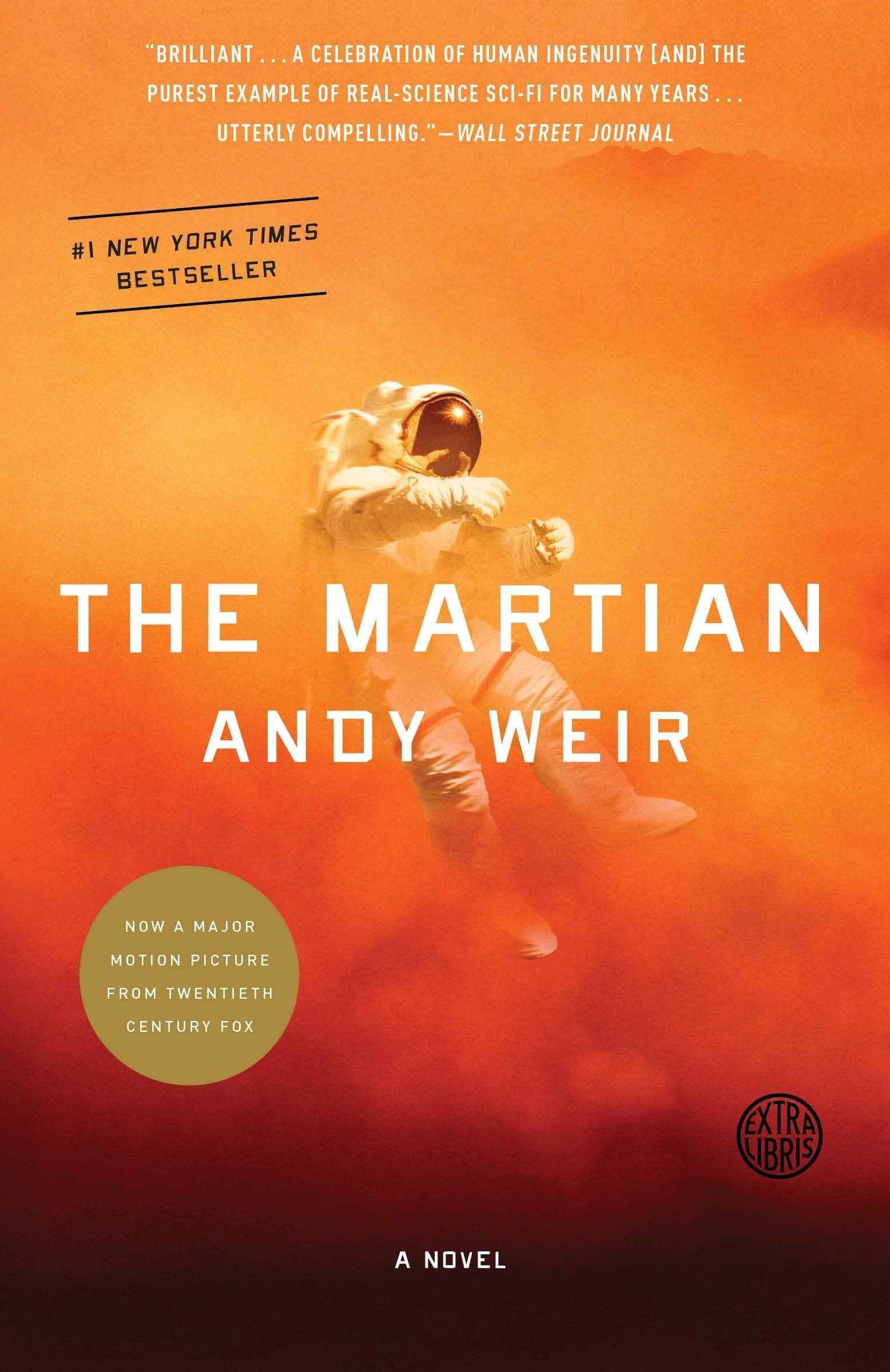






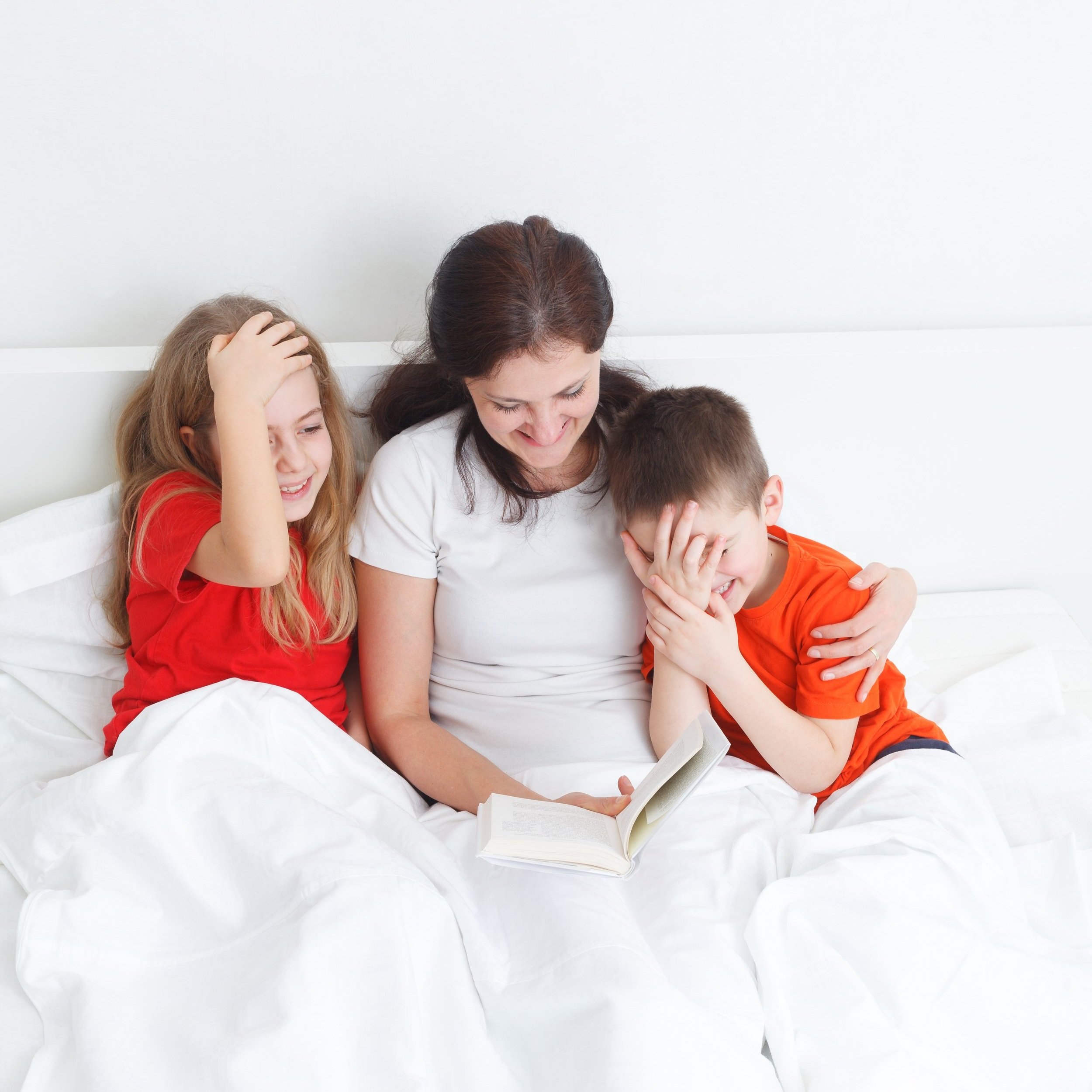


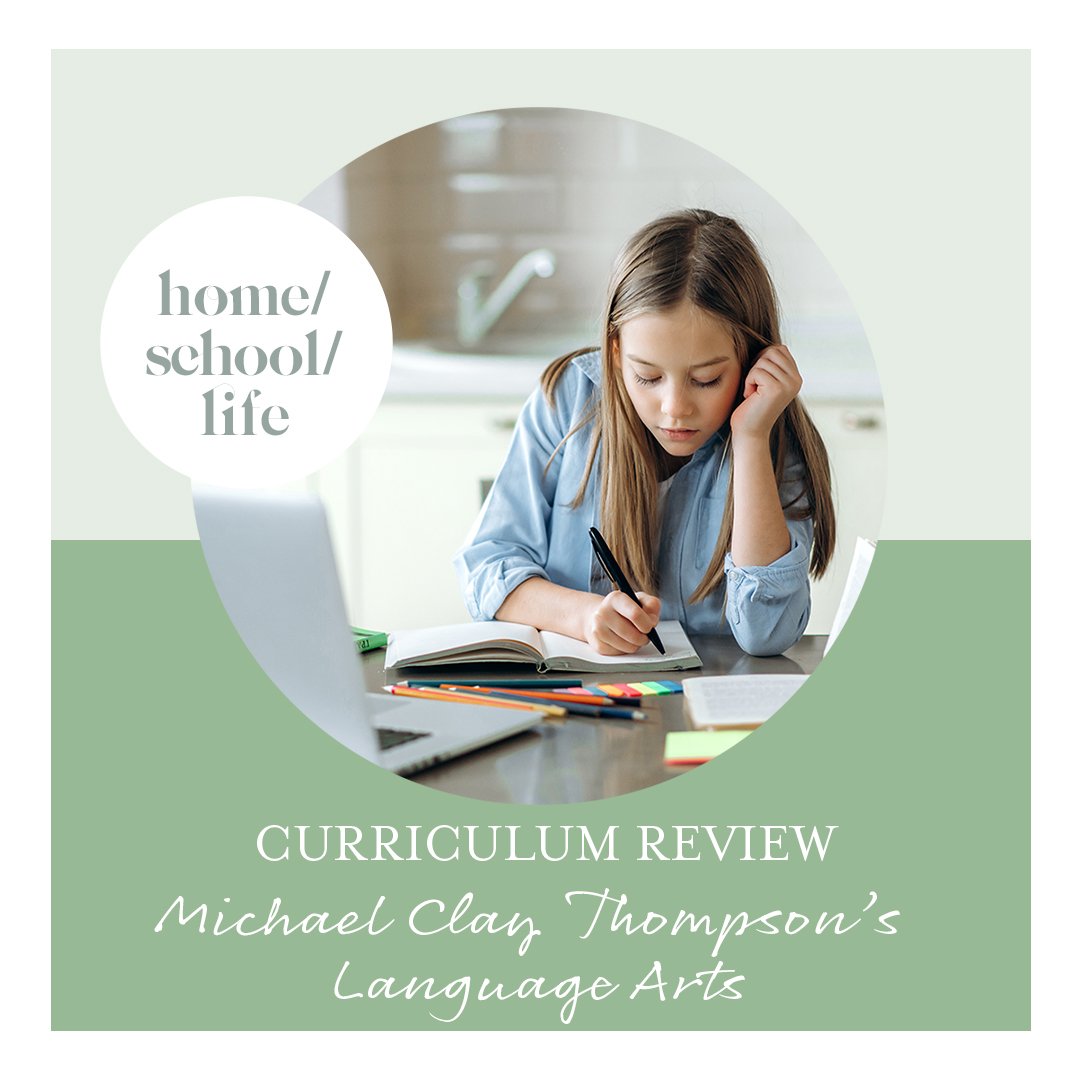



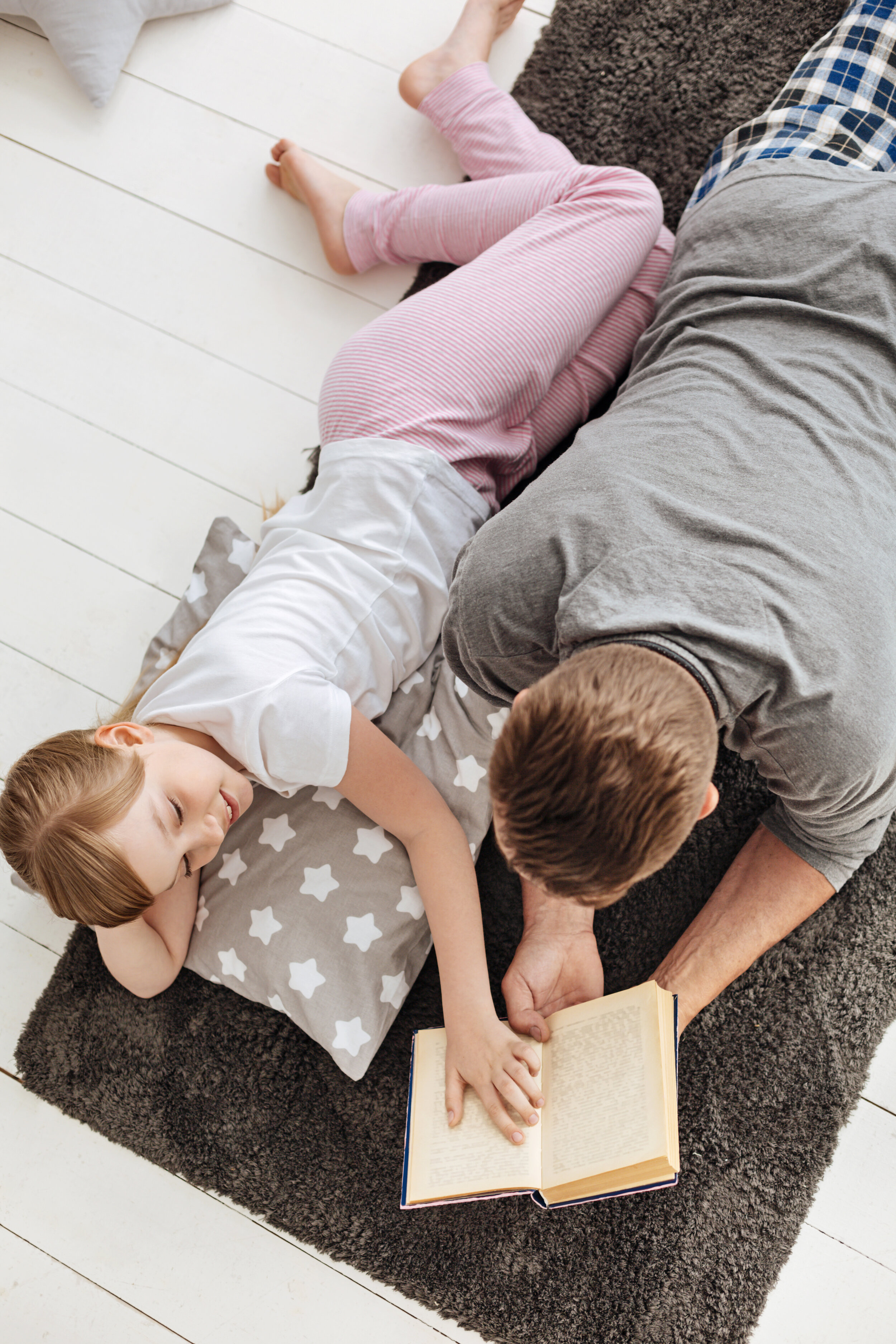




























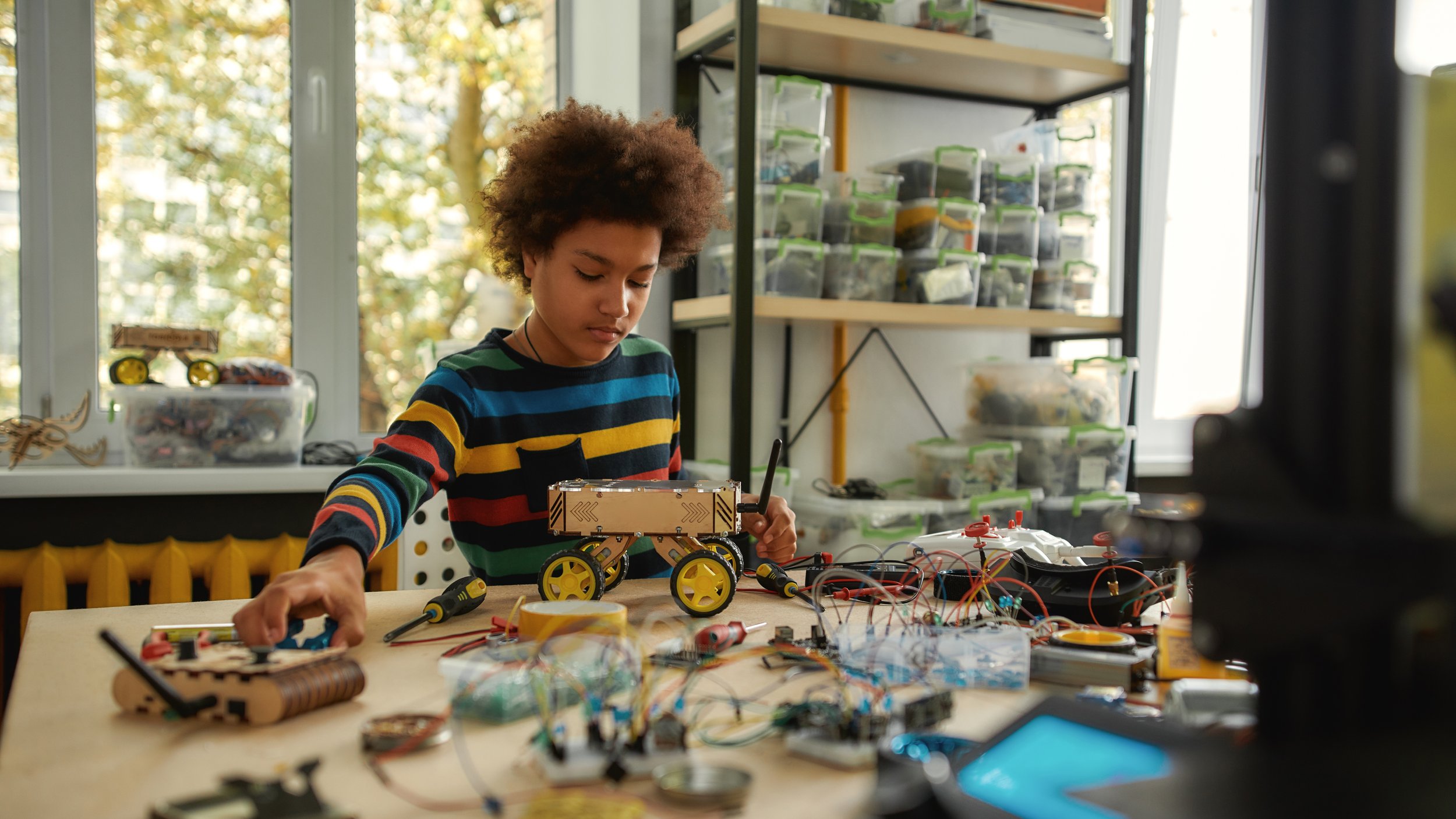






























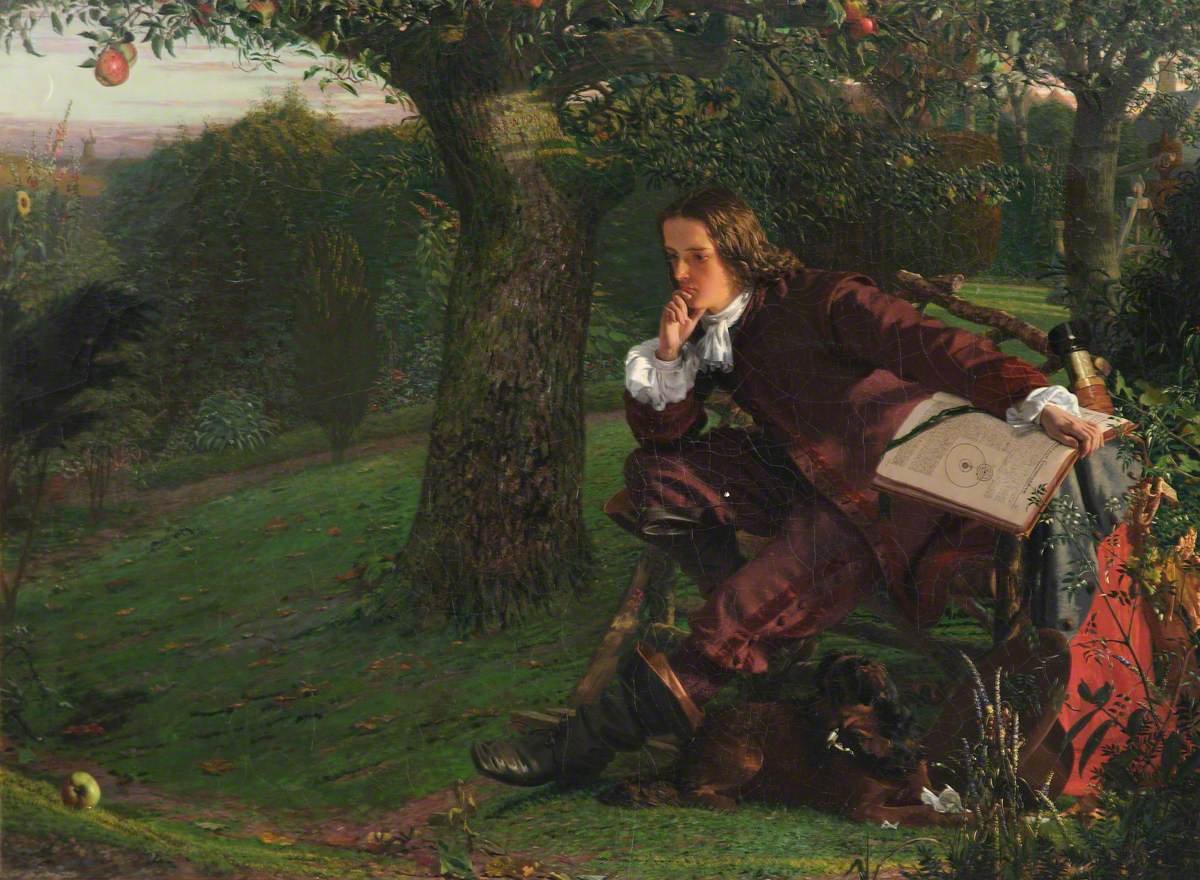










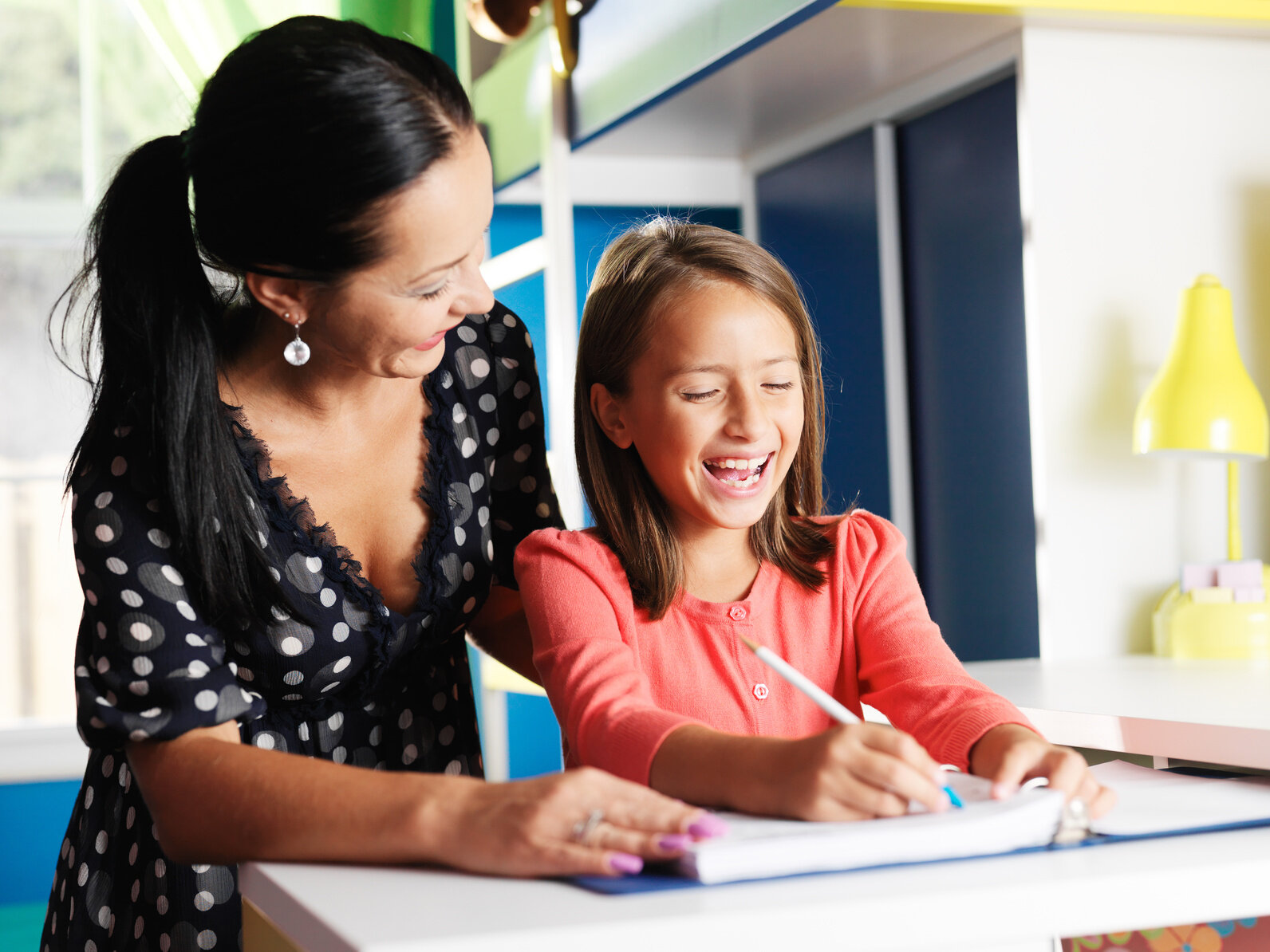













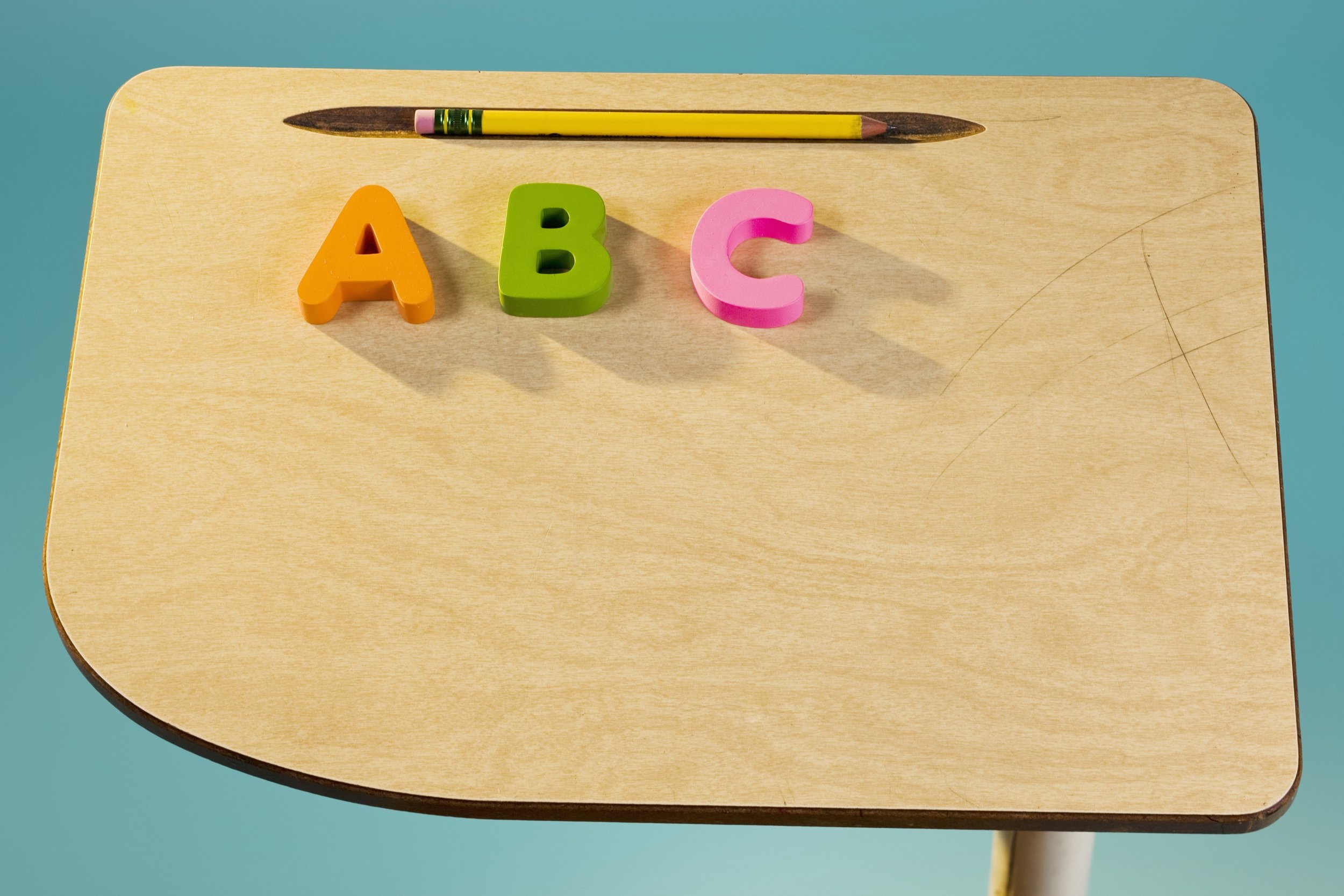



























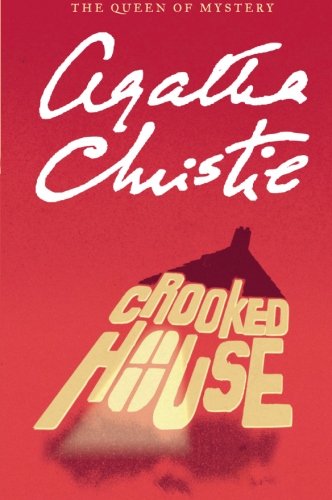


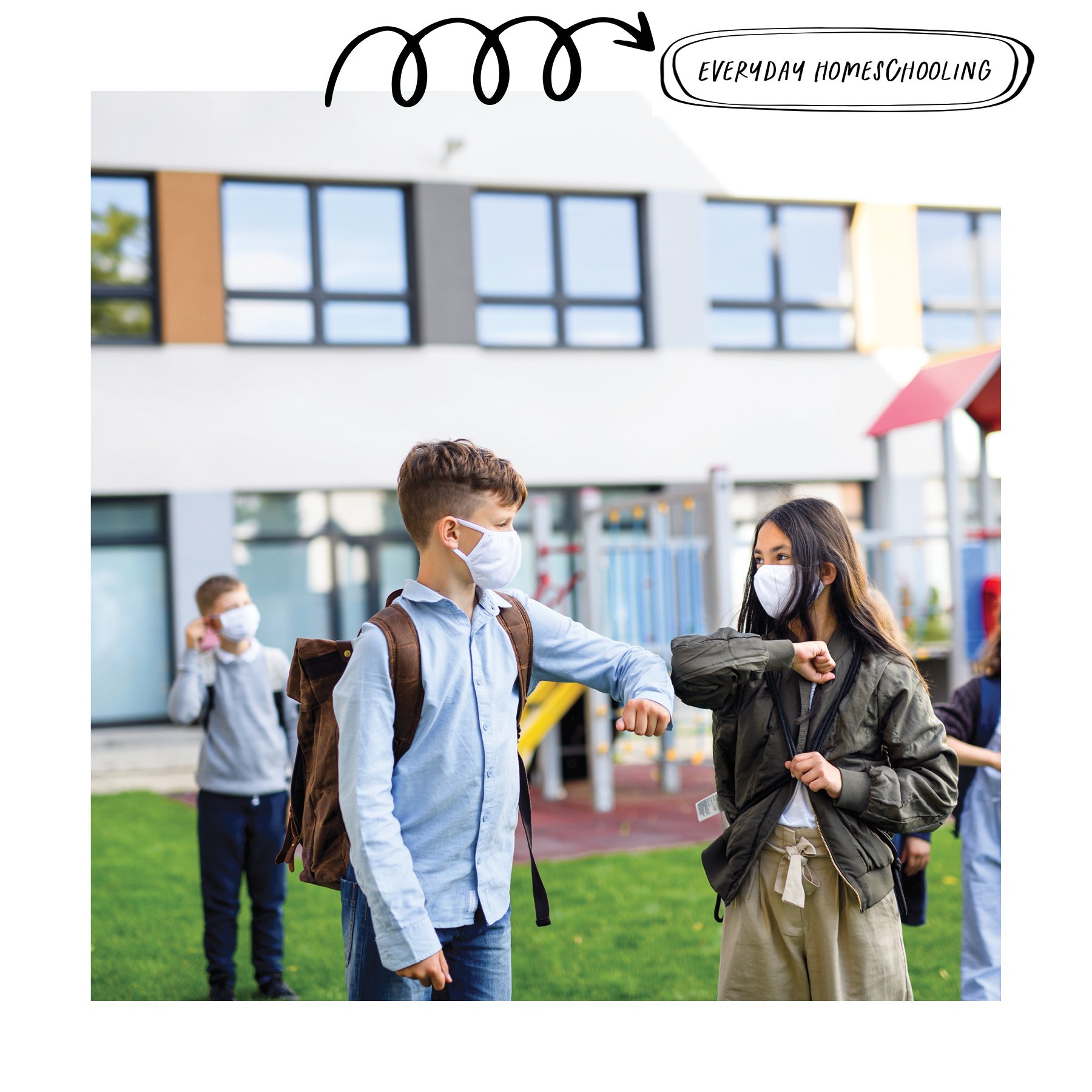







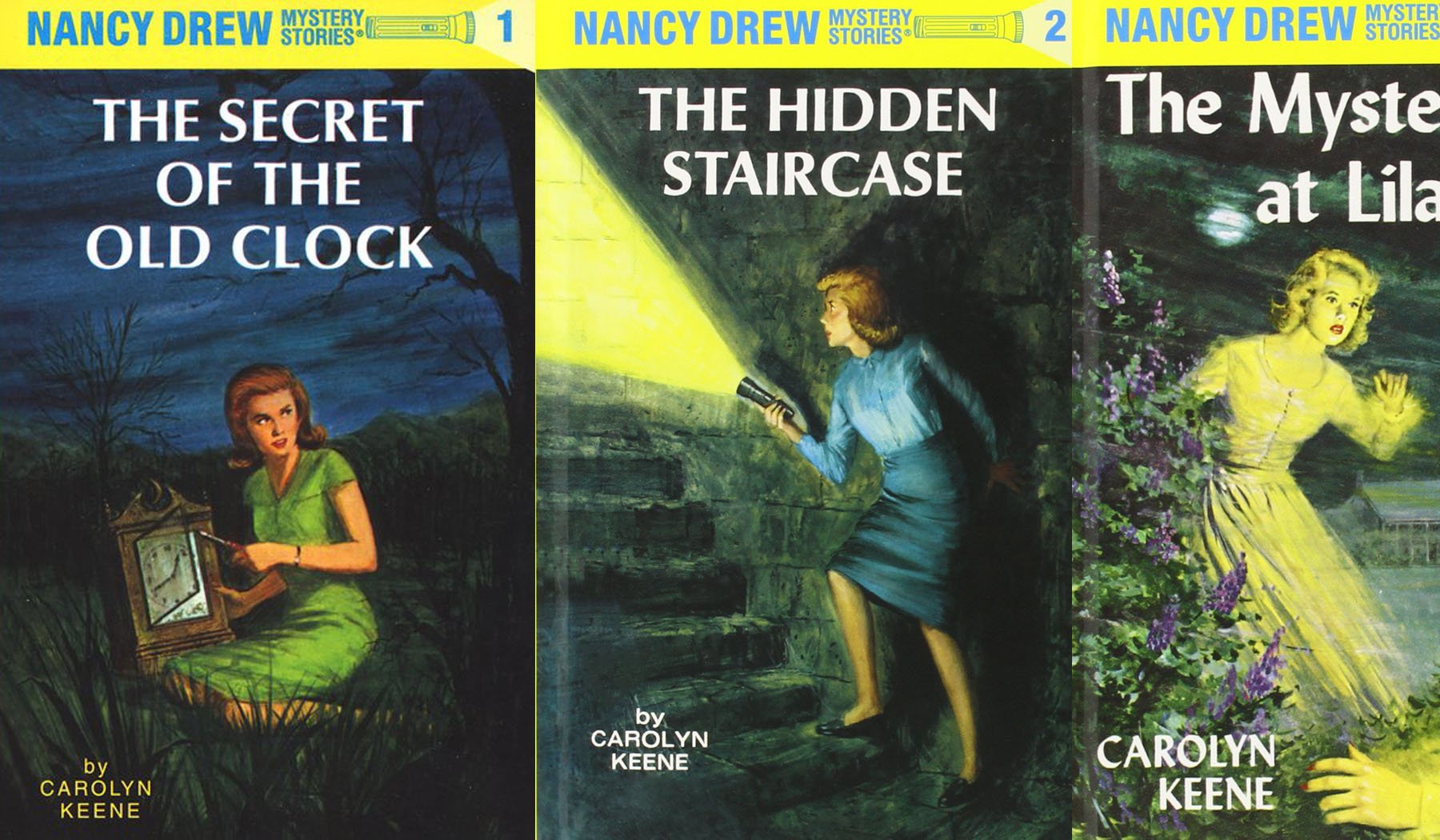








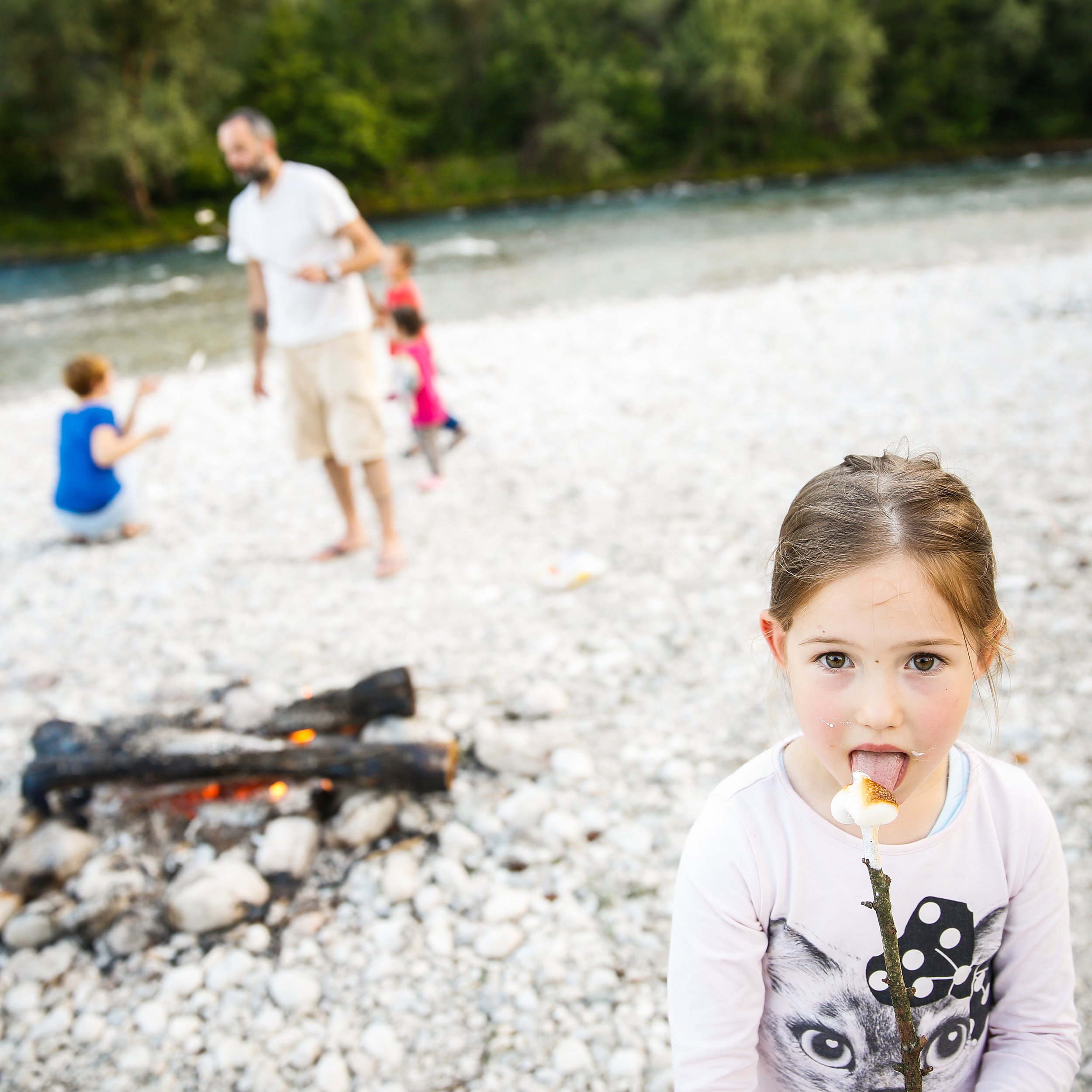
































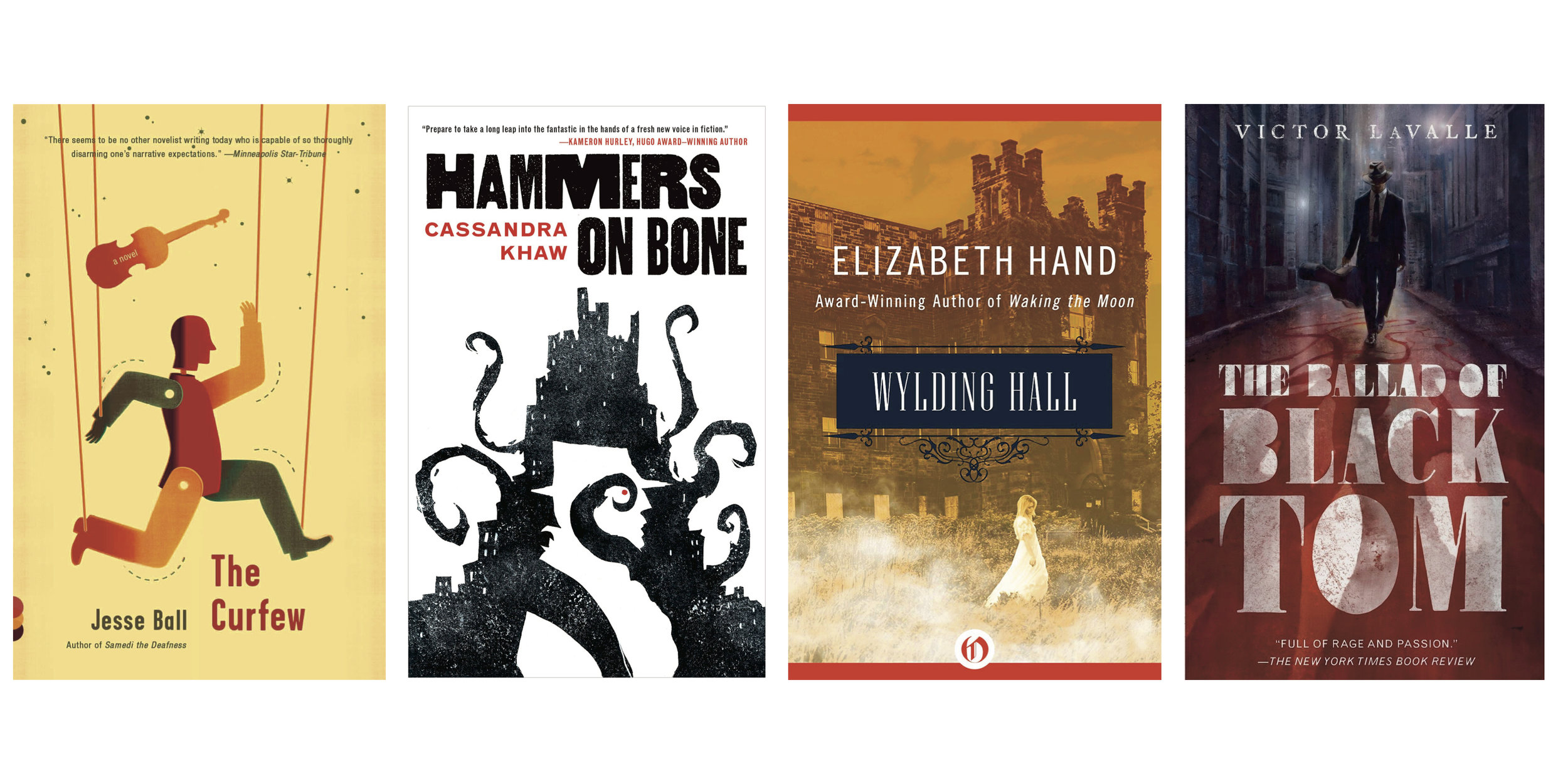






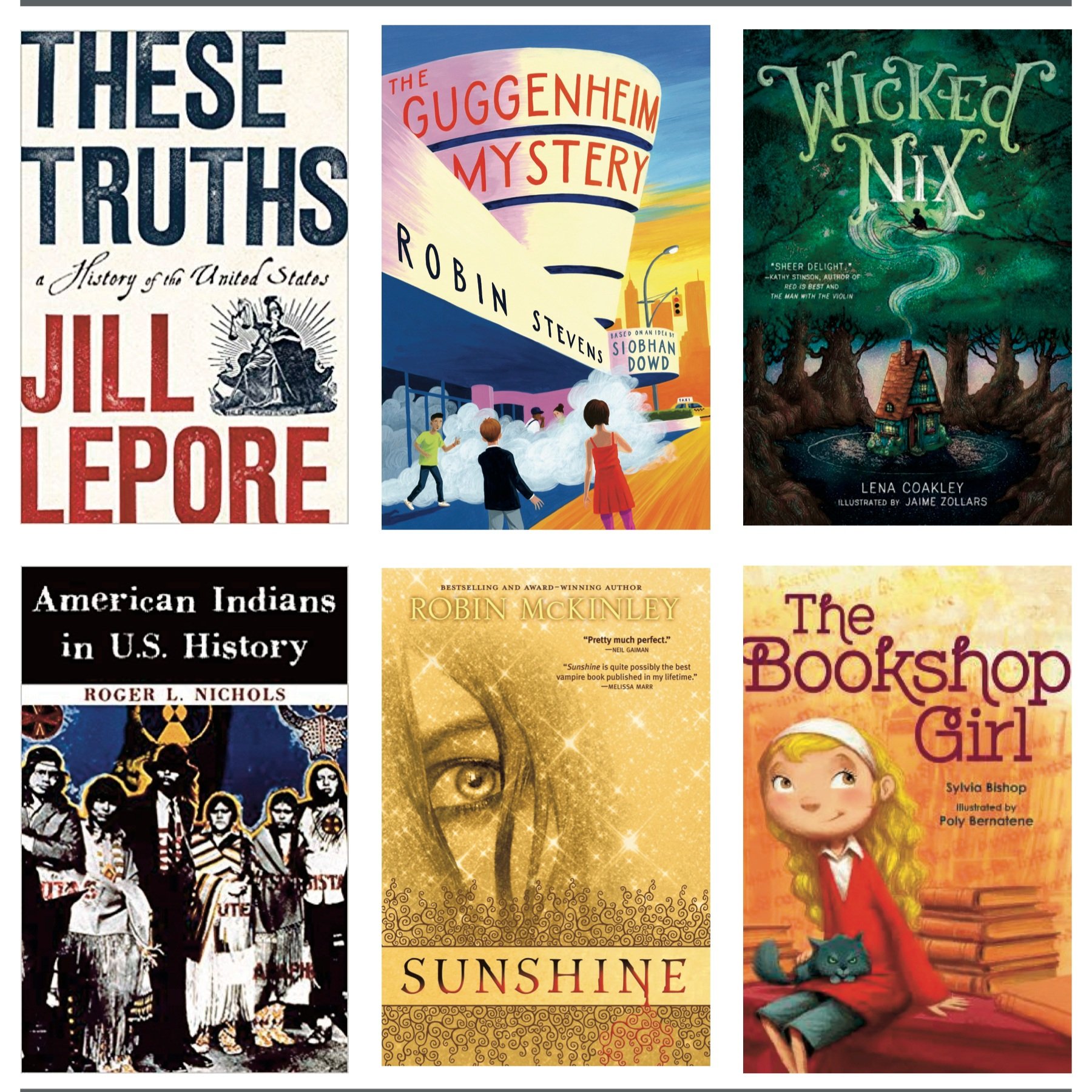
















































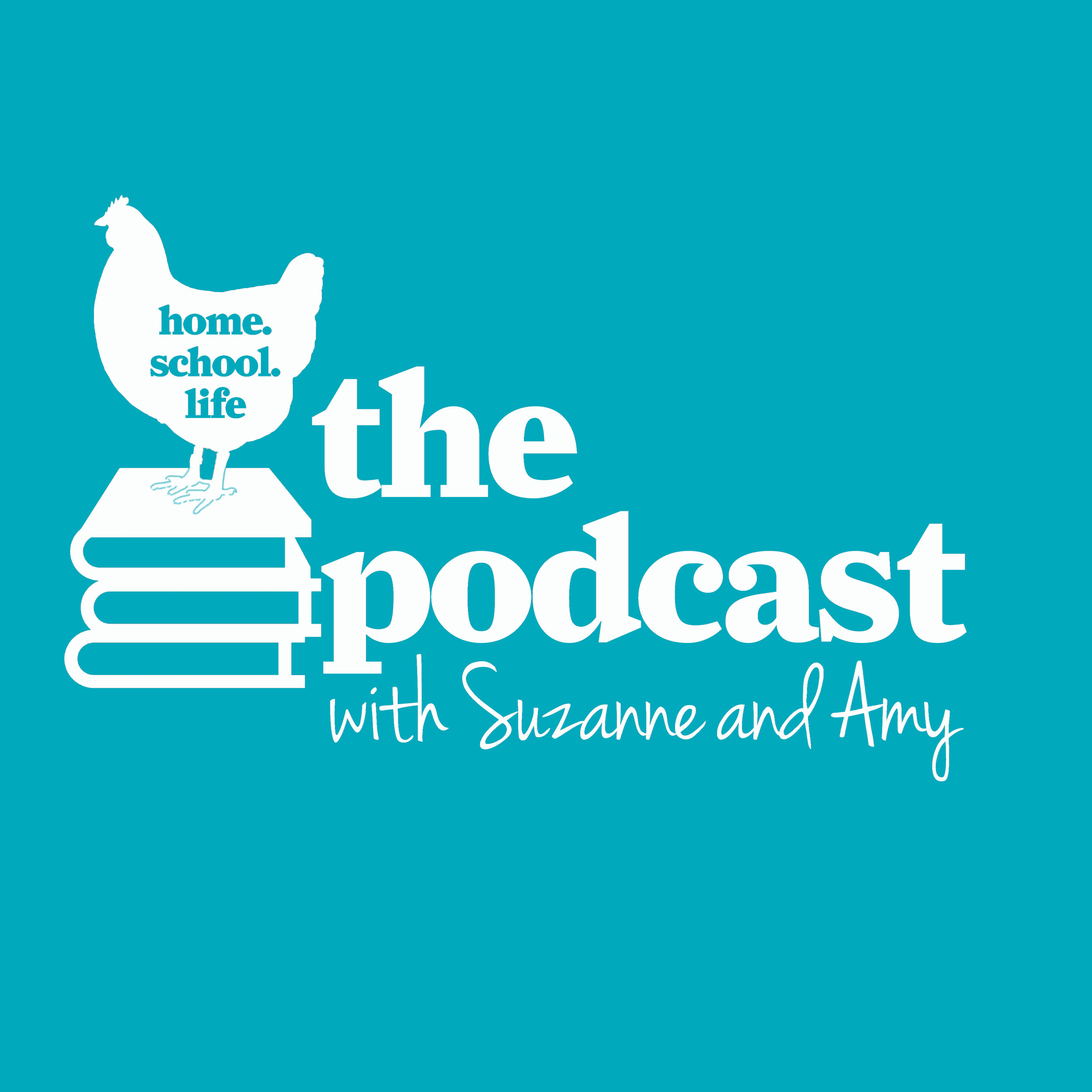

































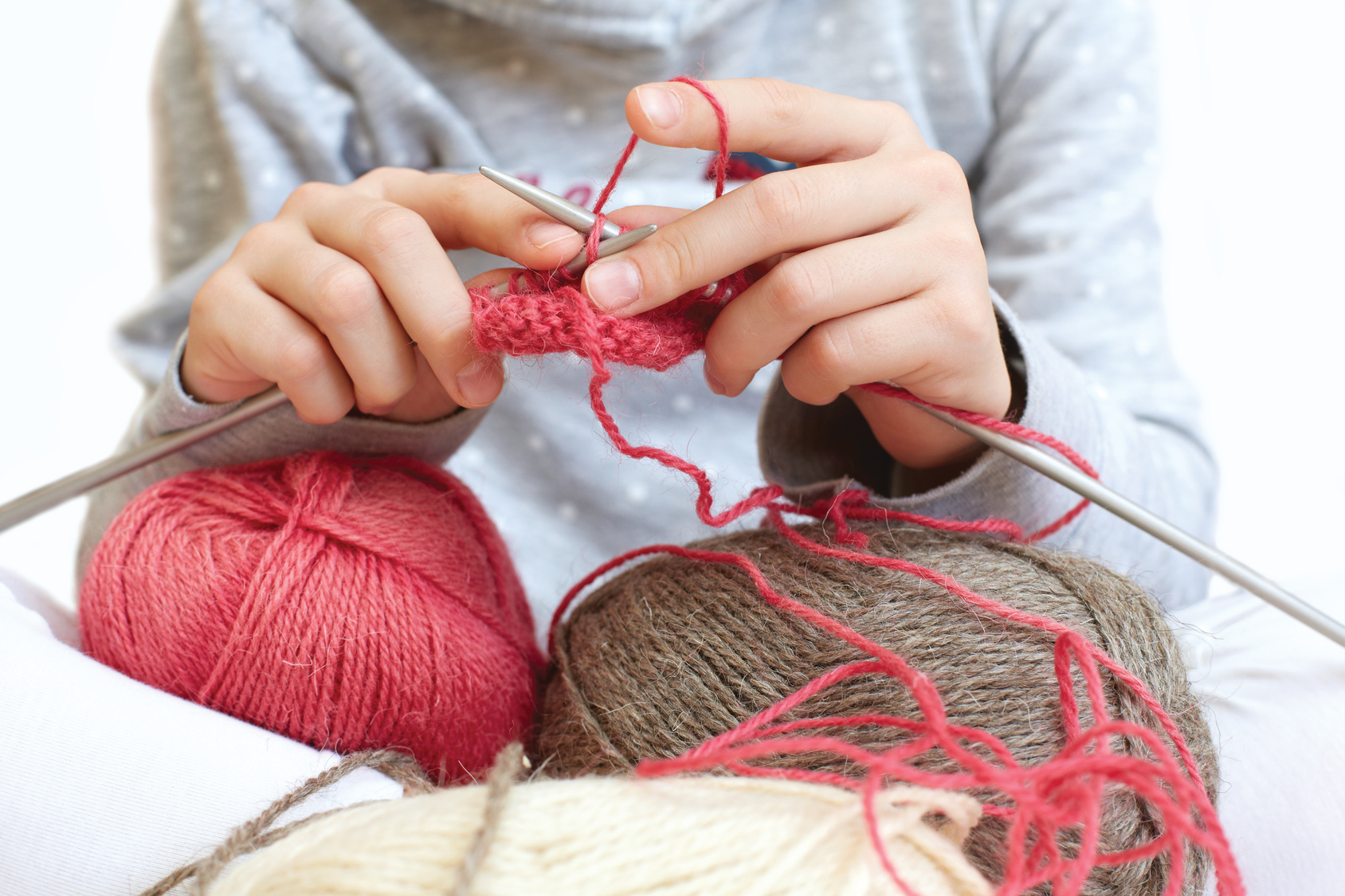



If you’ve got a reader who’s always ready for an excuse to hang with the gang from River Heights, one of these gifts might be a fun addition to your holiday wish list.